

Is Time Travel Possible?
We all travel in time! We travel one year in time between birthdays, for example. And we are all traveling in time at approximately the same speed: 1 second per second.
We typically experience time at one second per second. Credit: NASA/JPL-Caltech
NASA's space telescopes also give us a way to look back in time. Telescopes help us see stars and galaxies that are very far away . It takes a long time for the light from faraway galaxies to reach us. So, when we look into the sky with a telescope, we are seeing what those stars and galaxies looked like a very long time ago.
However, when we think of the phrase "time travel," we are usually thinking of traveling faster than 1 second per second. That kind of time travel sounds like something you'd only see in movies or science fiction books. Could it be real? Science says yes!

This image from the Hubble Space Telescope shows galaxies that are very far away as they existed a very long time ago. Credit: NASA, ESA and R. Thompson (Univ. Arizona)
How do we know that time travel is possible?
More than 100 years ago, a famous scientist named Albert Einstein came up with an idea about how time works. He called it relativity. This theory says that time and space are linked together. Einstein also said our universe has a speed limit: nothing can travel faster than the speed of light (186,000 miles per second).
Einstein's theory of relativity says that space and time are linked together. Credit: NASA/JPL-Caltech
What does this mean for time travel? Well, according to this theory, the faster you travel, the slower you experience time. Scientists have done some experiments to show that this is true.
For example, there was an experiment that used two clocks set to the exact same time. One clock stayed on Earth, while the other flew in an airplane (going in the same direction Earth rotates).
After the airplane flew around the world, scientists compared the two clocks. The clock on the fast-moving airplane was slightly behind the clock on the ground. So, the clock on the airplane was traveling slightly slower in time than 1 second per second.
Credit: NASA/JPL-Caltech
Can we use time travel in everyday life?
We can't use a time machine to travel hundreds of years into the past or future. That kind of time travel only happens in books and movies. But the math of time travel does affect the things we use every day.
For example, we use GPS satellites to help us figure out how to get to new places. (Check out our video about how GPS satellites work .) NASA scientists also use a high-accuracy version of GPS to keep track of where satellites are in space. But did you know that GPS relies on time-travel calculations to help you get around town?
GPS satellites orbit around Earth very quickly at about 8,700 miles (14,000 kilometers) per hour. This slows down GPS satellite clocks by a small fraction of a second (similar to the airplane example above).

GPS satellites orbit around Earth at about 8,700 miles (14,000 kilometers) per hour. Credit: GPS.gov
However, the satellites are also orbiting Earth about 12,550 miles (20,200 km) above the surface. This actually speeds up GPS satellite clocks by a slighter larger fraction of a second.
Here's how: Einstein's theory also says that gravity curves space and time, causing the passage of time to slow down. High up where the satellites orbit, Earth's gravity is much weaker. This causes the clocks on GPS satellites to run faster than clocks on the ground.
The combined result is that the clocks on GPS satellites experience time at a rate slightly faster than 1 second per second. Luckily, scientists can use math to correct these differences in time.

If scientists didn't correct the GPS clocks, there would be big problems. GPS satellites wouldn't be able to correctly calculate their position or yours. The errors would add up to a few miles each day, which is a big deal. GPS maps might think your home is nowhere near where it actually is!
In Summary:
Yes, time travel is indeed a real thing. But it's not quite what you've probably seen in the movies. Under certain conditions, it is possible to experience time passing at a different rate than 1 second per second. And there are important reasons why we need to understand this real-world form of time travel.
If you liked this, you may like:
Time travel: Is it possible?
Science says time travel is possible, but probably not in the way you're thinking.

Albert Einstein's theory
- General relativity and GPS
- Wormhole travel
- Alternate theories
Science fiction
Is time travel possible? Short answer: Yes, and you're doing it right now — hurtling into the future at the impressive rate of one second per second.
You're pretty much always moving through time at the same speed, whether you're watching paint dry or wishing you had more hours to visit with a friend from out of town.
But this isn't the kind of time travel that's captivated countless science fiction writers, or spurred a genre so extensive that Wikipedia lists over 400 titles in the category "Movies about Time Travel." In franchises like " Doctor Who ," " Star Trek ," and "Back to the Future" characters climb into some wild vehicle to blast into the past or spin into the future. Once the characters have traveled through time, they grapple with what happens if you change the past or present based on information from the future (which is where time travel stories intersect with the idea of parallel universes or alternate timelines).
Related: The best sci-fi time machines ever
Although many people are fascinated by the idea of changing the past or seeing the future before it's due, no person has ever demonstrated the kind of back-and-forth time travel seen in science fiction or proposed a method of sending a person through significant periods of time that wouldn't destroy them on the way. And, as physicist Stephen Hawking pointed out in his book " Black Holes and Baby Universes" (Bantam, 1994), "The best evidence we have that time travel is not possible, and never will be, is that we have not been invaded by hordes of tourists from the future."
Science does support some amount of time-bending, though. For example, physicist Albert Einstein 's theory of special relativity proposes that time is an illusion that moves relative to an observer. An observer traveling near the speed of light will experience time, with all its aftereffects (boredom, aging, etc.) much more slowly than an observer at rest. That's why astronaut Scott Kelly aged ever so slightly less over the course of a year in orbit than his twin brother who stayed here on Earth.
Related: Controversially, physicist argues that time is real
There are other scientific theories about time travel, including some weird physics that arise around wormholes , black holes and string theory . For the most part, though, time travel remains the domain of an ever-growing array of science fiction books, movies, television shows, comics, video games and more.

Einstein developed his theory of special relativity in 1905. Along with his later expansion, the theory of general relativity , it has become one of the foundational tenets of modern physics. Special relativity describes the relationship between space and time for objects moving at constant speeds in a straight line.
The short version of the theory is deceptively simple. First, all things are measured in relation to something else — that is to say, there is no "absolute" frame of reference. Second, the speed of light is constant. It stays the same no matter what, and no matter where it's measured from. And third, nothing can go faster than the speed of light.
From those simple tenets unfolds actual, real-life time travel. An observer traveling at high velocity will experience time at a slower rate than an observer who isn't speeding through space.
While we don't accelerate humans to near-light-speed, we do send them swinging around the planet at 17,500 mph (28,160 km/h) aboard the International Space Station . Astronaut Scott Kelly was born after his twin brother, and fellow astronaut, Mark Kelly . Scott Kelly spent 520 days in orbit, while Mark logged 54 days in space. The difference in the speed at which they experienced time over the course of their lifetimes has actually widened the age gap between the two men.
"So, where[as] I used to be just 6 minutes older, now I am 6 minutes and 5 milliseconds older," Mark Kelly said in a panel discussion on July 12, 2020, Space.com previously reported . "Now I've got that over his head."
General relativity and GPS time travel

The difference that low earth orbit makes in an astronaut's life span may be negligible — better suited for jokes among siblings than actual life extension or visiting the distant future — but the dilation in time between people on Earth and GPS satellites flying through space does make a difference.
Read more: Can we stop time?
The Global Positioning System , or GPS, helps us know exactly where we are by communicating with a network of a few dozen satellites positioned in a high Earth orbit. The satellites circle the planet from 12,500 miles (20,100 kilometers) away, moving at 8,700 mph (14,000 km/h).
According to special relativity, the faster an object moves relative to another object, the slower that first object experiences time. For GPS satellites with atomic clocks, this effect cuts 7 microseconds, or 7 millionths of a second, off each day, according to the American Physical Society publication Physics Central .
Read more: Could Star Trek's faster-than-light warp drive actually work?
Then, according to general relativity, clocks closer to the center of a large gravitational mass like Earth tick more slowly than those farther away. So, because the GPS satellites are much farther from the center of Earth compared to clocks on the surface, Physics Central added, that adds another 45 microseconds onto the GPS satellite clocks each day. Combined with the negative 7 microseconds from the special relativity calculation, the net result is an added 38 microseconds.
This means that in order to maintain the accuracy needed to pinpoint your car or phone — or, since the system is run by the U.S. Department of Defense, a military drone — engineers must account for an extra 38 microseconds in each satellite's day. The atomic clocks onboard don’t tick over to the next day until they have run 38 microseconds longer than comparable clocks on Earth.
Given those numbers, it would take more than seven years for the atomic clock in a GPS satellite to un-sync itself from an Earth clock by more than a blink of an eye. (We did the math: If you estimate a blink to last at least 100,000 microseconds, as the Harvard Database of Useful Biological Numbers does, it would take thousands of days for those 38 microsecond shifts to add up.)
This kind of time travel may seem as negligible as the Kelly brothers' age gap, but given the hyper-accuracy of modern GPS technology, it actually does matter. If it can communicate with the satellites whizzing overhead, your phone can nail down your location in space and time with incredible accuracy.
Can wormholes take us back in time?
General relativity might also provide scenarios that could allow travelers to go back in time, according to NASA . But the physical reality of those time-travel methods is no piece of cake.
Wormholes are theoretical "tunnels" through the fabric of space-time that could connect different moments or locations in reality to others. Also known as Einstein-Rosen bridges or white holes, as opposed to black holes, speculation about wormholes abounds. But despite taking up a lot of space (or space-time) in science fiction, no wormholes of any kind have been identified in real life.
Related: Best time travel movies
"The whole thing is very hypothetical at this point," Stephen Hsu, a professor of theoretical physics at the University of Oregon, told Space.com sister site Live Science . "No one thinks we're going to find a wormhole anytime soon."
Primordial wormholes are predicted to be just 10^-34 inches (10^-33 centimeters) at the tunnel's "mouth". Previously, they were expected to be too unstable for anything to be able to travel through them. However, a study claims that this is not the case, Live Science reported .
The theory, which suggests that wormholes could work as viable space-time shortcuts, was described by physicist Pascal Koiran. As part of the study, Koiran used the Eddington-Finkelstein metric, as opposed to the Schwarzschild metric which has been used in the majority of previous analyses.
In the past, the path of a particle could not be traced through a hypothetical wormhole. However, using the Eddington-Finkelstein metric, the physicist was able to achieve just that.
Koiran's paper was described in October 2021, in the preprint database arXiv , before being published in the Journal of Modern Physics D.

Alternate time travel theories
While Einstein's theories appear to make time travel difficult, some researchers have proposed other solutions that could allow jumps back and forth in time. These alternate theories share one major flaw: As far as scientists can tell, there's no way a person could survive the kind of gravitational pulling and pushing that each solution requires.
Infinite cylinder theory
Astronomer Frank Tipler proposed a mechanism (sometimes known as a Tipler Cylinder ) where one could take matter that is 10 times the sun's mass, then roll it into a very long, but very dense cylinder. The Anderson Institute , a time travel research organization, described the cylinder as "a black hole that has passed through a spaghetti factory."
After spinning this black hole spaghetti a few billion revolutions per minute, a spaceship nearby — following a very precise spiral around the cylinder — could travel backward in time on a "closed, time-like curve," according to the Anderson Institute.
The major problem is that in order for the Tipler Cylinder to become reality, the cylinder would need to be infinitely long or be made of some unknown kind of matter. At least for the foreseeable future, endless interstellar pasta is beyond our reach.
Time donuts
Theoretical physicist Amos Ori at the Technion-Israel Institute of Technology in Haifa, Israel, proposed a model for a time machine made out of curved space-time — a donut-shaped vacuum surrounded by a sphere of normal matter.
"The machine is space-time itself," Ori told Live Science . "If we were to create an area with a warp like this in space that would enable time lines to close on themselves, it might enable future generations to return to visit our time."
Amos Ori is a theoretical physicist at the Technion-Israel Institute of Technology in Haifa, Israel. His research interests and publications span the fields of general relativity, black holes, gravitational waves and closed time lines.
There are a few caveats to Ori's time machine. First, visitors to the past wouldn't be able to travel to times earlier than the invention and construction of the time donut. Second, and more importantly, the invention and construction of this machine would depend on our ability to manipulate gravitational fields at will — a feat that may be theoretically possible but is certainly beyond our immediate reach.

Time travel has long occupied a significant place in fiction. Since as early as the "Mahabharata," an ancient Sanskrit epic poem compiled around 400 B.C., humans have dreamed of warping time, Lisa Yaszek, a professor of science fiction studies at the Georgia Institute of Technology in Atlanta, told Live Science .
Every work of time-travel fiction creates its own version of space-time, glossing over one or more scientific hurdles and paradoxes to achieve its plot requirements.
Some make a nod to research and physics, like " Interstellar ," a 2014 film directed by Christopher Nolan. In the movie, a character played by Matthew McConaughey spends a few hours on a planet orbiting a supermassive black hole, but because of time dilation, observers on Earth experience those hours as a matter of decades.
Others take a more whimsical approach, like the "Doctor Who" television series. The series features the Doctor, an extraterrestrial "Time Lord" who travels in a spaceship resembling a blue British police box. "People assume," the Doctor explained in the show, "that time is a strict progression from cause to effect, but actually from a non-linear, non-subjective viewpoint, it's more like a big ball of wibbly-wobbly, timey-wimey stuff."
Long-standing franchises like the "Star Trek" movies and television series, as well as comic universes like DC and Marvel Comics, revisit the idea of time travel over and over.
Related: Marvel movies in order: chronological & release order
Here is an incomplete (and deeply subjective) list of some influential or notable works of time travel fiction:
Books about time travel:

- Rip Van Winkle (Cornelius S. Van Winkle, 1819) by Washington Irving
- A Christmas Carol (Chapman & Hall, 1843) by Charles Dickens
- The Time Machine (William Heinemann, 1895) by H. G. Wells
- A Connecticut Yankee in King Arthur's Court (Charles L. Webster and Co., 1889) by Mark Twain
- The Restaurant at the End of the Universe (Pan Books, 1980) by Douglas Adams
- A Tale of Time City (Methuen, 1987) by Diana Wynn Jones
- The Outlander series (Delacorte Press, 1991-present) by Diana Gabaldon
- Harry Potter and the Prisoner of Azkaban (Bloomsbury/Scholastic, 1999) by J. K. Rowling
- Thief of Time (Doubleday, 2001) by Terry Pratchett
- The Time Traveler's Wife (MacAdam/Cage, 2003) by Audrey Niffenegger
- All You Need is Kill (Shueisha, 2004) by Hiroshi Sakurazaka
Movies about time travel:
- Planet of the Apes (1968)
- Superman (1978)
- Time Bandits (1981)
- The Terminator (1984)
- Back to the Future series (1985, 1989, 1990)
- Star Trek IV: The Voyage Home (1986)
- Bill & Ted's Excellent Adventure (1989)
- Groundhog Day (1993)
- Galaxy Quest (1999)
- The Butterfly Effect (2004)
- 13 Going on 30 (2004)
- The Lake House (2006)
- Meet the Robinsons (2007)
- Hot Tub Time Machine (2010)
- Midnight in Paris (2011)
- Looper (2012)
- X-Men: Days of Future Past (2014)
- Edge of Tomorrow (2014)
- Interstellar (2014)
- Doctor Strange (2016)
- A Wrinkle in Time (2018)
- The Last Sharknado: It's About Time (2018)
- Avengers: Endgame (2019)
- Tenet (2020)
- Palm Springs (2020)
- Zach Snyder's Justice League (2021)
- The Tomorrow War (2021)
Television about time travel:

- Doctor Who (1963-present)
- The Twilight Zone (1959-1964) (multiple episodes)
- Star Trek (multiple series, multiple episodes)
- Samurai Jack (2001-2004)
- Lost (2004-2010)
- Phil of the Future (2004-2006)
- Steins;Gate (2011)
- Outlander (2014-2023)
- Loki (2021-present)
Games about time travel:
- Chrono Trigger (1995)
- TimeSplitters (2000-2005)
- Kingdom Hearts (2002-2019)
- Prince of Persia: Sands of Time (2003)
- God of War II (2007)
- Ratchet and Clank Future: A Crack In Time (2009)
- Sly Cooper: Thieves in Time (2013)
- Dishonored 2 (2016)
- Titanfall 2 (2016)
- Outer Wilds (2019)
Additional resources
Explore physicist Peter Millington's thoughts about Stephen Hawking's time travel theories at The Conversation . Check out a kid-friendly explanation of real-world time travel from NASA's Space Place . For an overview of time travel in fiction and the collective consciousness, read " Time Travel: A History " (Pantheon, 2016) by James Gleik.
Join our Space Forums to keep talking space on the latest missions, night sky and more! And if you have a news tip, correction or comment, let us know at: [email protected].
Get the Space.com Newsletter
Breaking space news, the latest updates on rocket launches, skywatching events and more!
Vicky Stein is a science writer based in California. She has a bachelor's degree in ecology and evolutionary biology from Dartmouth College and a graduate certificate in science writing from the University of California, Santa Cruz (2018). Afterwards, she worked as a news assistant for PBS NewsHour, and now works as a freelancer covering anything from asteroids to zebras. Follow her most recent work (and most recent pictures of nudibranchs) on Twitter.
Space pictures! See our space image of the day
'The last 12 months have broken records like never before': Earth exceeds 1.5 C warming every month for entire year
Chinese company CAS Space takes steps toward 1st launch of reusable rocket
Most Popular
- 2 Recent star death leaves behind highly magnetic stellar corpse
- 3 Lego Technic planet earth and moon in orbit review
- 4 Boeing needs to improve quality-control work on SLS moon rocket, NASA Inspector General finds
- 5 Scientists hail scientific legacy of comet-chasing Rosetta probe on 10th anniversary
April 26, 2023
Is Time Travel Possible?
The laws of physics allow time travel. So why haven’t people become chronological hoppers?
By Sarah Scoles

yuanyuan yan/Getty Images
In the movies, time travelers typically step inside a machine and—poof—disappear. They then reappear instantaneously among cowboys, knights or dinosaurs. What these films show is basically time teleportation .
Scientists don’t think this conception is likely in the real world, but they also don’t relegate time travel to the crackpot realm. In fact, the laws of physics might allow chronological hopping, but the devil is in the details.
Time traveling to the near future is easy: you’re doing it right now at a rate of one second per second, and physicists say that rate can change. According to Einstein’s special theory of relativity, time’s flow depends on how fast you’re moving. The quicker you travel, the slower seconds pass. And according to Einstein’s general theory of relativity , gravity also affects clocks: the more forceful the gravity nearby, the slower time goes.
On supporting science journalism
If you're enjoying this article, consider supporting our award-winning journalism by subscribing . By purchasing a subscription you are helping to ensure the future of impactful stories about the discoveries and ideas shaping our world today.
“Near massive bodies—near the surface of neutron stars or even at the surface of the Earth, although it’s a tiny effect—time runs slower than it does far away,” says Dave Goldberg, a cosmologist at Drexel University.
If a person were to hang out near the edge of a black hole , where gravity is prodigious, Goldberg says, only a few hours might pass for them while 1,000 years went by for someone on Earth. If the person who was near the black hole returned to this planet, they would have effectively traveled to the future. “That is a real effect,” he says. “That is completely uncontroversial.”
Going backward in time gets thorny, though (thornier than getting ripped to shreds inside a black hole). Scientists have come up with a few ways it might be possible, and they have been aware of time travel paradoxes in general relativity for decades. Fabio Costa, a physicist at the Nordic Institute for Theoretical Physics, notes that an early solution with time travel began with a scenario written in the 1920s. That idea involved massive long cylinder that spun fast in the manner of straw rolled between your palms and that twisted spacetime along with it. The understanding that this object could act as a time machine allowing one to travel to the past only happened in the 1970s, a few decades after scientists had discovered a phenomenon called “closed timelike curves.”
“A closed timelike curve describes the trajectory of a hypothetical observer that, while always traveling forward in time from their own perspective, at some point finds themselves at the same place and time where they started, creating a loop,” Costa says. “This is possible in a region of spacetime that, warped by gravity, loops into itself.”
“Einstein read [about closed timelike curves] and was very disturbed by this idea,” he adds. The phenomenon nevertheless spurred later research.
Science began to take time travel seriously in the 1980s. In 1990, for instance, Russian physicist Igor Novikov and American physicist Kip Thorne collaborated on a research paper about closed time-like curves. “They started to study not only how one could try to build a time machine but also how it would work,” Costa says.
Just as importantly, though, they investigated the problems with time travel. What if, for instance, you tossed a billiard ball into a time machine, and it traveled to the past and then collided with its past self in a way that meant its present self could never enter the time machine? “That looks like a paradox,” Costa says.
Since the 1990s, he says, there’s been on-and-off interest in the topic yet no big breakthrough. The field isn’t very active today, in part because every proposed model of a time machine has problems. “It has some attractive features, possibly some potential, but then when one starts to sort of unravel the details, there ends up being some kind of a roadblock,” says Gaurav Khanna of the University of Rhode Island.
For instance, most time travel models require negative mass —and hence negative energy because, as Albert Einstein revealed when he discovered E = mc 2 , mass and energy are one and the same. In theory, at least, just as an electric charge can be positive or negative, so can mass—though no one’s ever found an example of negative mass. Why does time travel depend on such exotic matter? In many cases, it is needed to hold open a wormhole—a tunnel in spacetime predicted by general relativity that connects one point in the cosmos to another.
Without negative mass, gravity would cause this tunnel to collapse. “You can think of it as counteracting the positive mass or energy that wants to traverse the wormhole,” Goldberg says.
Khanna and Goldberg concur that it’s unlikely matter with negative mass even exists, although Khanna notes that some quantum phenomena show promise, for instance, for negative energy on very small scales. But that would be “nowhere close to the scale that would be needed” for a realistic time machine, he says.
These challenges explain why Khanna initially discouraged Caroline Mallary, then his graduate student at the University of Massachusetts Dartmouth, from doing a time travel project. Mallary and Khanna went forward anyway and came up with a theoretical time machine that didn’t require negative mass. In its simplistic form, Mallary’s idea involves two parallel cars, each made of regular matter. If you leave one parked and zoom the other with extreme acceleration, a closed timelike curve will form between them.
Easy, right? But while Mallary’s model gets rid of the need for negative matter, it adds another hurdle: it requires infinite density inside the cars for them to affect spacetime in a way that would be useful for time travel. Infinite density can be found inside a black hole, where gravity is so intense that it squishes matter into a mind-bogglingly small space called a singularity. In the model, each of the cars needs to contain such a singularity. “One of the reasons that there's not a lot of active research on this sort of thing is because of these constraints,” Mallary says.
Other researchers have created models of time travel that involve a wormhole, or a tunnel in spacetime from one point in the cosmos to another. “It's sort of a shortcut through the universe,” Goldberg says. Imagine accelerating one end of the wormhole to near the speed of light and then sending it back to where it came from. “Those two sides are no longer synced,” he says. “One is in the past; one is in the future.” Walk between them, and you’re time traveling.
You could accomplish something similar by moving one end of the wormhole near a big gravitational field—such as a black hole—while keeping the other end near a smaller gravitational force. In that way, time would slow down on the big gravity side, essentially allowing a particle or some other chunk of mass to reside in the past relative to the other side of the wormhole.
Making a wormhole requires pesky negative mass and energy, however. A wormhole created from normal mass would collapse because of gravity. “Most designs tend to have some similar sorts of issues,” Goldberg says. They’re theoretically possible, but there’s currently no feasible way to make them, kind of like a good-tasting pizza with no calories.
And maybe the problem is not just that we don’t know how to make time travel machines but also that it’s not possible to do so except on microscopic scales—a belief held by the late physicist Stephen Hawking. He proposed the chronology protection conjecture: The universe doesn’t allow time travel because it doesn’t allow alterations to the past. “It seems there is a chronology protection agency, which prevents the appearance of closed timelike curves and so makes the universe safe for historians,” Hawking wrote in a 1992 paper in Physical Review D .
Part of his reasoning involved the paradoxes time travel would create such as the aforementioned situation with a billiard ball and its more famous counterpart, the grandfather paradox : If you go back in time and kill your grandfather before he has children, you can’t be born, and therefore you can’t time travel, and therefore you couldn’t have killed your grandfather. And yet there you are.
Those complications are what interests Massachusetts Institute of Technology philosopher Agustin Rayo, however, because the paradoxes don’t just call causality and chronology into question. They also make free will seem suspect. If physics says you can go back in time, then why can’t you kill your grandfather? “What stops you?” he says. Are you not free?
Rayo suspects that time travel is consistent with free will, though. “What’s past is past,” he says. “So if, in fact, my grandfather survived long enough to have children, traveling back in time isn’t going to change that. Why will I fail if I try? I don’t know because I don’t have enough information about the past. What I do know is that I’ll fail somehow.”
If you went to kill your grandfather, in other words, you’d perhaps slip on a banana en route or miss the bus. “It's not like you would find some special force compelling you not to do it,” Costa says. “You would fail to do it for perfectly mundane reasons.”
In 2020 Costa worked with Germain Tobar, then his undergraduate student at the University of Queensland in Australia, on the math that would underlie a similar idea: that time travel is possible without paradoxes and with freedom of choice.
Goldberg agrees with them in a way. “I definitely fall into the category of [thinking that] if there is time travel, it will be constructed in such a way that it produces one self-consistent view of history,” he says. “Because that seems to be the way that all the rest of our physical laws are constructed.”
No one knows what the future of time travel to the past will hold. And so far, no time travelers have come to tell us about it.

Can we time travel? A theoretical physicist provides some answers
Emeritus professor, Physics, Carleton University
Disclosure statement
Peter Watson received funding from NSERC. He is affiliated with Carleton University and a member of the Canadian Association of Physicists.
Carleton University provides funding as a member of The Conversation CA.
Carleton University provides funding as a member of The Conversation CA-FR.
View all partners
- Bahasa Indonesia
Time travel makes regular appearances in popular culture, with innumerable time travel storylines in movies, television and literature. But it is a surprisingly old idea: one can argue that the Greek tragedy Oedipus Rex , written by Sophocles over 2,500 years ago, is the first time travel story .
But is time travel in fact possible? Given the popularity of the concept, this is a legitimate question. As a theoretical physicist, I find that there are several possible answers to this question, not all of which are contradictory.
The simplest answer is that time travel cannot be possible because if it was, we would already be doing it. One can argue that it is forbidden by the laws of physics, like the second law of thermodynamics or relativity . There are also technical challenges: it might be possible but would involve vast amounts of energy.
There is also the matter of time-travel paradoxes; we can — hypothetically — resolve these if free will is an illusion, if many worlds exist or if the past can only be witnessed but not experienced. Perhaps time travel is impossible simply because time must flow in a linear manner and we have no control over it, or perhaps time is an illusion and time travel is irrelevant.

Laws of physics
Since Albert Einstein’s theory of relativity — which describes the nature of time, space and gravity — is our most profound theory of time, we would like to think that time travel is forbidden by relativity. Unfortunately, one of his colleagues from the Institute for Advanced Study, Kurt Gödel, invented a universe in which time travel was not just possible, but the past and future were inextricably tangled.
We can actually design time machines , but most of these (in principle) successful proposals require negative energy , or negative mass, which does not seem to exist in our universe. If you drop a tennis ball of negative mass, it will fall upwards. This argument is rather unsatisfactory, since it explains why we cannot time travel in practice only by involving another idea — that of negative energy or mass — that we do not really understand.
Mathematical physicist Frank Tipler conceptualized a time machine that does not involve negative mass, but requires more energy than exists in the universe .
Time travel also violates the second law of thermodynamics , which states that entropy or randomness must always increase. Time can only move in one direction — in other words, you cannot unscramble an egg. More specifically, by travelling into the past we are going from now (a high entropy state) into the past, which must have lower entropy.
This argument originated with the English cosmologist Arthur Eddington , and is at best incomplete. Perhaps it stops you travelling into the past, but it says nothing about time travel into the future. In practice, it is just as hard for me to travel to next Thursday as it is to travel to last Thursday.
Resolving paradoxes
There is no doubt that if we could time travel freely, we run into the paradoxes. The best known is the “ grandfather paradox ”: one could hypothetically use a time machine to travel to the past and murder their grandfather before their father’s conception, thereby eliminating the possibility of their own birth. Logically, you cannot both exist and not exist.
Read more: Time travel could be possible, but only with parallel timelines
Kurt Vonnegut’s anti-war novel Slaughterhouse-Five , published in 1969, describes how to evade the grandfather paradox. If free will simply does not exist, it is not possible to kill one’s grandfather in the past, since he was not killed in the past. The novel’s protagonist, Billy Pilgrim, can only travel to other points on his world line (the timeline he exists in), but not to any other point in space-time, so he could not even contemplate killing his grandfather.
The universe in Slaughterhouse-Five is consistent with everything we know. The second law of thermodynamics works perfectly well within it and there is no conflict with relativity. But it is inconsistent with some things we believe in, like free will — you can observe the past, like watching a movie, but you cannot interfere with the actions of people in it.
Could we allow for actual modifications of the past, so that we could go back and murder our grandfather — or Hitler ? There are several multiverse theories that suppose that there are many timelines for different universes. This is also an old idea: in Charles Dickens’ A Christmas Carol , Ebeneezer Scrooge experiences two alternative timelines, one of which leads to a shameful death and the other to happiness.
Time is a river
Roman emperor Marcus Aurelius wrote that:
“ Time is like a river made up of the events which happen , and a violent stream; for as soon as a thing has been seen, it is carried away, and another comes in its place, and this will be carried away too.”
We can imagine that time does flow past every point in the universe, like a river around a rock. But it is difficult to make the idea precise. A flow is a rate of change — the flow of a river is the amount of water that passes a specific length in a given time. Hence if time is a flow, it is at the rate of one second per second, which is not a very useful insight.
Theoretical physicist Stephen Hawking suggested that a “ chronology protection conjecture ” must exist, an as-yet-unknown physical principle that forbids time travel. Hawking’s concept originates from the idea that we cannot know what goes on inside a black hole, because we cannot get information out of it. But this argument is redundant: we cannot time travel because we cannot time travel!
Researchers are investigating a more fundamental theory, where time and space “emerge” from something else. This is referred to as quantum gravity , but unfortunately it does not exist yet.
So is time travel possible? Probably not, but we don’t know for sure!
- Time travel
- Stephen Hawking
- Albert Einstein
- Listen to this article
- Time travel paradox
- Arthur Eddington

Manager, Centre Policy and Translation

Finance Business Partner - FBE/MLS/EDUCN

Newsletter and Deputy Social Media Producer

College Director and Principal | Curtin College

Head of School: Engineering, Computer and Mathematical Sciences

Where Does the Concept of Time Travel Come From?
Time; he's waiting in the wings.

The dream of traveling through time is both ancient and universal. But where did humanity's fascination with time travel begin, and why is the idea so appealing?
The concept of time travel — moving through time the way we move through three-dimensional space — may in fact be hardwired into our perception of time . Linguists have recognized that we are essentially incapable of talking about temporal matters without referencing spatial ones. "In language — any language — no two domains are more intimately linked than space and time," wrote Israeli linguist Guy Deutscher in his 2005 book "The Unfolding of Language." "Even if we are not always aware of it, we invariably speak of time in terms of space, and this reflects the fact that we think of time in terms of space."
Deutscher reminds us that when we plan to meet a friend "around" lunchtime, we are using a metaphor, since lunchtime doesn't have any physical sides. He similarly points out that time can not literally be "long" or "short" like a stick, nor "pass" like a train, or even go "forward" or "backward" any more than it goes sideways, diagonal or down.
Related: Why Does Time Fly When You're Having Fun?
Perhaps because of this connection between space and time, the possibility that time can be experienced in different ways and traveled through has surprisingly early roots. One of the first known examples of time travel appears in the Mahabharata, an ancient Sanskrit epic poem compiled around 400 B.C., Lisa Yaszek, a professor of science fiction studies at the Georgia Institute of Technology in Atlanta, told Live Science
In the Mahabharata is a story about King Kakudmi, who lived millions of years ago and sought a suitable husband for his beautiful and accomplished daughter, Revati. The two travel to the home of the creator god Brahma to ask for advice. But while in Brahma's plane of existence, they must wait as the god listens to a 20-minute song, after which Brahma explains that time moves differently in the heavens than on Earth. It turned out that "27 chatur-yugas" had passed, or more than 116 million years, according to an online summary , and so everyone Kakudmi and Revati had ever known, including family members and potential suitors, was dead. After this shock, the story closes on a somewhat happy ending in that Revati is betrothed to Balarama, twin brother of the deity Krishna.
Time is fleeting
To Yaszek, the tale provides an example of what we now call time dilation , in which different observers measure different lengths of time based on their relative frames of reference, a part of Einstein's theory of relativity.
Sign up for the Live Science daily newsletter now
Get the world’s most fascinating discoveries delivered straight to your inbox.
Such time-slip stories are widespread throughout the world, Yaszek said, citing a Middle Eastern tale from the first century BCE about a Jewish miracle worker who sleeps beneath a newly-planted carob tree and wakes up 70 years later to find it has now matured and borne fruit (carob trees are notorious for how long they take to produce their first harvest). Another instance can be found in an eighth-century Japanese fable about a fisherman named Urashima Tarō who travels to an undersea palace and falls in love with a princess. Tarō finds that, when he returns home, 100 years have passed, according to a translation of the tale published online by the University of South Florida .
In the early-modern era of the 1700 and 1800s, the sleep-story version of time travel grew more popular, Yaszek said. Examples include the classic tale of Rip Van Winkle, as well as books like Edward Belamy's utopian 1888 novel "Looking Backwards," in which a man wakes up in the year 2000, and the H.G. Wells 1899 novel "The Sleeper Awakes," about a man who slumbers for centuries and wakes to a completely transformed London.
Related: Science Fiction or Fact: Is Time Travel Possible ?
In other stories from this period, people also start to be able to move backward in time. In Mark Twain’s 1889 satire "A Connecticut Yankee in King Arthur's Court," a blow to the head propels an engineer back to the reign of the legendary British monarch. Objects that can send someone through time begin to appear as well, mainly clocks, such as in Edward Page Mitchell's 1881 story "The Clock that Went Backwards" or Lewis Carrol's 1889 children's fantasy "Sylvie and Bruno," where the characters possess a watch that is a type of time machine .
The explosion of such stories during this era might come from the fact that people were "beginning to standardize time, and orient themselves to clocks more frequently," Yaszek said.
Time after time
Wells provided one of the most enduring time-travel plots in his 1895 novella "The Time Machine," which included the innovation of a craft that can move forward and backward through long spans of time. "This is when we’re getting steam engines and trains and the first automobiles," Yaszek said. "I think it’s no surprise that Wells suddenly thinks: 'Hey, maybe we can use a vehicle to travel through time.'"
Because it is such a rich visual icon, many beloved time-travel stories written after this have included a striking time machine, Yaszek said, referencing The Doctor's blue police box — the TARDIS — in the long-running BBC series "Doctor Who," and "Back to the Future"'s silver luxury speedster, the DeLorean .
More recently, time travel has been used to examine our relationship with the past, Yaszek said, in particular in pieces written by women and people of color. Octavia Butler's 1979 novel "Kindred" about a modern woman who visits her pre-Civil-War ancestors is "a marvelous story that really asks us to rethink black and white relations through history," she said. And a contemporary web series called " Send Me " involves an African-American psychic who can guide people back to antebellum times and witness slavery.
"I'm really excited about stories like that," Yaszek said. "They help us re-see history from new perspectives."
Time travel has found a home in a wide variety of genres and media, including comedies such as "Groundhog Day" and "Bill and Ted's Excellent Adventure" as well as video games like Nintendo's "The Legend of Zelda: Majora's Mask" and the indie game "Braid."
Yaszek suggested that this malleability and ubiquity speaks to time travel tales' ability to offer an escape from our normal reality. "They let us imagine that we can break free from the grip of linear time," she said. "And somehow get a new perspective on the human experience, either our own or humanity as a whole, and I think that feels so exciting to us."
That modern people are often drawn to time-machine stories in particular might reflect the fact that we live in a technological world, she added. Yet time travel's appeal certainly has deeper roots, interwoven into the very fabric of our language and appearing in some of our earliest imaginings.
"I think it's a way to make sense of the otherwise intangible and inexplicable, because it's hard to grasp time," Yaszek said. "But this is one of the final frontiers, the frontier of time, of life and death. And we're all moving forward, we're all traveling through time."
- If There Were a Time Warp, How Would Physicists Find It?
- Can Animals Tell Time?
- Why Does Time Sometimes Fly When You're NOT Having Fun?
Originally published on Live Science .
Adam Mann is a freelance journalist with over a decade of experience, specializing in astronomy and physics stories. He has a bachelor's degree in astrophysics from UC Berkeley. His work has appeared in the New Yorker, New York Times, National Geographic, Wall Street Journal, Wired, Nature, Science, and many other places. He lives in Oakland, California, where he enjoys riding his bike.
14 best science books for kids and young adults
'I'm as happy as I've ever been in my life': Why some people feel happiness near death
1st map of Antarctica's green space unveiled. Here's what it shows.
Most Popular
- 2 No, NASA hasn't warned of an impending asteroid strike in 2038. Here's what really happened.
- 3 Milky Way's black hole 'exhaust vent' discovered in eerie X-ray observations
- 4 NASA offers SpaceX $843 million to destroy the International Space Station
- 5 Which continent has the most animal species?
- 2 Tasselled wobbegong: The master of disguise that can eat a shark almost as big as itself
- 3 Newly discovered asteroid larger than the Great Pyramid of Giza will zoom between Earth and the moon on Saturday
- 4 2,000 years ago, a bridge in Switzerland collapsed on top of Celtic sacrifice victims, new study suggests
- 5 What causes you to get a 'stitch in your side'?
A history of time travel: the how, the why and the when of turning back the clock
Pop on Aqua's 'Turn Back Time' and settle in

For most of human history, the world didn’t change very quickly. Until the 1700s, kids could largely expect their lives to be similar to their parents, and that their children would have an experience very similar to their own, too. There were obviously changes in how humans lived over longer stretches of time, but nothing that even different generations could easily observe.

My first introduction to science fiction was Valérian and Laureline. I was ten years old. Every Wednesday there was a magazine called Pilote in France, and there was two pages of Valerian every week. It was the first time I’d seen a girl and a guy in space, agents travelling in time and space. That was amazing.
The past is written. The present? We have to deal with it. But the future is a white page. So I don’t understand why people on this white page are putting all this darkness.
God! Let’s have some color! Let’s have some fun! Let’s at least imagine a better world. Maybe we won’t be able to do it, but we have to try.
The industrial revolution changed all of this. For the first time in human history, the pace of technological change was visible within a human lifespan.
It is not a coincidence that it was only after science and technological change became a normal part of the human experience, that time travel became something we dreamed of.
Time travel is actually somewhat unique in science fiction. Many core concepts have their origins earlier in history.
The historical roots of the concept of a 'robot' can be seen in Jewish folklore for example: Golems were anthropomorphic beings sculpted from clay. In Greek mythology, characters would travel to other worlds, and it's no coincidence that The Matrix features a character called Persephone. But time travel is different.
The first real work to envisage travelling in time was The Time Machine by HG Wells, which was published in 1895.
The book tells the story of a scientist who builds a machine that will take him to the year 802,701 - a world in which ape-like Morlocks are evolutionary descendants of humanity, and have regressed to a primitive lifestyle.
Get daily insight, inspiration and deals in your inbox
Sign up for breaking news, reviews, opinion, top tech deals, and more.
The book was a product of its time - both in terms of the science played upon (Charles Darwin had only published Origin of the Species 35 years earlier), and the racist attitudes: it is speculated that the Morlocks were inspired by the Morlachs, a real ethnic group in the Balkans who were often characterised as “primitive”.
Real science
But of course, this was science fiction - what about science fact? The two have always been closely linked, and during the early days it was no different. In 1907, the physicist Hermann Minkowski first argued that Einstein’s Special Relativity could be expressed in geometric terms as a fourth dimension (to add to our known three) - which is exactly how Wells visualised time travel in his work of fiction.
The development of Special and then General Relativity was significant as it provided the theoretical backbone for how time travel could be conceived in scientific terms. In 1949 Kurt Gödel took Einstein’s work and came up with a solution which as a mathematical necessity included what he called “closed timelike curves” - the idea that if you travel far enough, time will loop back around (like how if you keep flying East, you’ll eventually end up back where you started).

In other words, using what became known as the Gödel Metric, it is theoretically possible to travel between any one point in time and space and any other.
There was just one problem: for Gödel’s theory to be right, the universe would have to be spinning - and scientists don’t believe that it is. So while the maths might make sense, Gödel’s universe does not appear to be the one we’re actually living in. Though he never gave up hope that he might be right: Apparently even on this deathbed, he would ask if anyone has found evidence of a spinning universe. And if he does ever turn out to be right, it means that time travel can happen, and is actually fairly straightforward (well, as far as physics goes anyway).
Since Gödel, scientists have continued to hypothesise about time travel, with perhaps the best known example being tachyons - or particles that move faster than the speed of light (therefore, effectively travelling in time). So far, despite one false alarm at CERN in 2011, there is no evidence that they actually exist.
Chancers and hoaxes
Of course, the lack of real science when it comes to time travel has not stopped some people from claiming to have done it. With the likes of Marty McFly and Doctor Who on the brain, chancers and hoaxers have realised that time travel is immediately a compelling prospect. Here’s a couple of amusing examples.

At the turn of the millennium, when the internet was still in its infancy, forums were captivated by the story of John Titor. Titor claimed he was from the year 2036, and had been sent back in time by the government to obtain an IBM 5100 computer. The thinking appeared to be that by obtaining the computer, the government could find a solution to the UNIX 2038 bug - in which clocks could be reset, Millennium Bug-style, leading to chaos everywhere.
Posting on the 'Time Travel Institute' forums, Titor went into details on how his time machine worked: It was powered by “two top-spin, dual positive singularities”, and used an X-ray venting system. He also gave a potted history of what humanity could expect: A new American civil war in 2004, and World War III in 2015. He also claimed the “many worlds” interpretation of quantum physics was true, hence why he wasn’t violating the so-called “grandfather paradox”.
Titor claimed he was from the year 2036, and had been sent back in time by the government to obtain an IBM 5100 computer.
Okay, so he probably wasn’t a real time traveller, but in the early days of the internet, when anonymity was more commonplace, he truly captured the imaginations of nerdy early adopters who perhaps, just a little bit, hoped that he might be the real thing.
More recently, in 2013, an Iranian scientist named Ali Razeghi claimed to have invented a time machine of sorts. It was supposedly capable of predicting the next 5-8 years for an individual, with up to 98% accuracy. According to The Telegraph , Razeghi said the invention fits into the size of a standard PC case and “It will not take you into the future, it will bring the future to you”. The idea is that the Iranian government could use it to predict future security threats and military confrontations. So perhaps it is time to check in and see if he managed to predict Donald Trump?
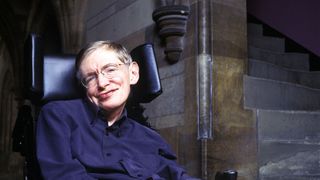
So is this the best we can do? Will we ever manage to crack time travel? Some scientists are still sceptical that it could ever be possible. This includes Stephen Hawking, who proposed the 'Chronology Protection Conjecture' – which is what it sounds like. Essentially, he argues that the laws of physics are as they are to specifically make time travel impossible – on all but “submicroscopic” scales. Essentially, this is to protect how causality works, as if we are suddenly allowed to travel back and kill our grandfathers, it would create massive time paradoxes.
Hawking revealed to Ars Technica in 2012 how he had held a party for time travellers, but only sent out invitations after the date it was held. So did the party support his argument that time travel is impossible? Or did he end up spending the evening in the company of John Titor and Doctor Who?
“I sat there a long time, but no one came”, he said, much to our disappointment.
Huge thanks to Stephen Jorgenson-Murray for walking us through some of the more brain-mangling science for this article.

To celebrate the release of Valerian and the City of a Thousand Planets , Luc Besson is today behind the lens at TechRadar. Here’s what we’ve got in store for you:
- Luc Besson presents TechRadar
- From Verne to Valerian: how France became the home of sci-fi
- Luc Besson talks streaming, viral videos and cinema tech
- Star spangled glamour: making space travel cooler than ever before
- A history of time travel: the how, the why and the when
- 20 best sci-fi films on Netflix and Amazon Prime
- Amazing future tech from sci-fi films that totally exist now
Valerian and the City of a Thousand Planets is released in UK cinemas August 2nd, and is out now in the US.
ICYMI: the week's 7 biggest tech news stories from Disney Plus password sharing to the RingConn Gen 2 smart ring
Sorry, Figure AI, but your robot won't be cool until it can walk like a human
Red Dead Redemption could finally be getting a PC port
Most Popular
- 2 Quordle today – hints and answers for Saturday, June 29 (game #887)
- 3 Everything new on Prime Video in July 2024
- 4 Is Proton VPN legit? An honest analysis of the service and its parent company
- 5 AMD just unleashed FSR 3.1 – and it’s a great day for PC gamers no matter what brand of graphics card they own
- 2 Microsoft's Copilot+ AI PCs aren't all that special right now, but there's one major reason why that's about to change
- 3 This One Million Checkbox game is sparking an internet war – and it's taken hours of our life we'll never get back
- 4 Geekom launches yet another mini PC that makes it a little bit more difficult to justify buying a traditional desktop PC — AX8 Pro looks like Intel's legendary NUC but with an unbelievably low price tag
- 5 Slowest new laptop in the world is now on sale, with Windows 95 and a CPU that's almost 40 years old — but at least it is (almost) pocketable and can run Doom or Commander Keen
Exploring the Reality of Time Travel: Science Fact vs. Science Fiction

Will it ever be possible for time travel to occur?
Have you ever dreamed of traveling through time, like characters do in science fiction movies? For centuries, the concept of time travel has captivated people’s imaginations. Time travel is the concept of moving between different points in time, just like you move between different places. In movies, you might have seen characters using special machines, magical devices or even hopping into a futuristic car to travel backward or forward in time.
But is this just a fun idea for movies, or could it really happen?
The Science Behind Time Travel
The question of whether time is reversible remains one of the biggest unresolved questions in science. If the universe follows the laws of thermodynamics , it may not be possible. The second law of thermodynamics states that things in the universe can either remain the same or become more disordered over time.
It’s a bit like saying you can’t unscramble eggs once they’ve been cooked. According to this law, the universe can never go back exactly to how it was before. Time can only go forward, like a one-way street.
Time Is Relative
However, physicist Albert Einstein’s theory of special relativity suggests that time passes at different rates for different people. Someone speeding along on a spaceship moving close to the speed of light – 671 million miles per hour! – will experience time slower than a person on Earth.
People have yet to build spaceships that can move at speeds anywhere near as fast as light, but astronauts who visit the International Space Station orbit around the Earth at speeds close to 17,500 mph. Astronaut Scott Kelly has spent 520 days at the International Space Station, and as a result has aged a little more slowly than his twin brother – and fellow astronaut – Mark Kelly. Scott used to be 6 minutes younger than his twin brother. Now, because Scott was traveling so much faster than Mark and for so many days, he is 6 minutes and 5 milliseconds younger .
Theoretical Possibilities and Challenges
Some scientists are exploring other ideas that could theoretically allow time travel. One concept involves wormholes, or hypothetical tunnels in space that could create shortcuts for journeys across the universe. If someone could build a wormhole and then figure out a way to move one end at close to the speed of light – like the hypothetical spaceship mentioned above – the moving end would age more slowly than the stationary end. Someone who entered the moving end and exited the wormhole through the stationary end would come out in their past.
However, wormholes remain theoretical: Scientists have yet to spot one. It also looks like it would be incredibly challenging to send humans through a wormhole space tunnel.
Paradoxes and Failed Dinner Parties
There are also paradoxes associated with time travel. The famous “ grandfather paradox ” is a hypothetical problem that could arise if someone traveled back in time and accidentally prevented their grandparents from meeting. This would create a paradox where you were never born, which raises the question: How could you have traveled back in time in the first place? It’s a mind-boggling puzzle that adds to the mystery of time travel.
Famously, physicist Stephen Hawking tested the possibility of time travel by throwing a dinner party where invitations noting the date, time, and coordinates were not sent out until after it had happened. His hope was that his invitation would be read by someone living in the future, who had capabilities to travel back in time. But no one showed up.
As he pointed out : “The best evidence we have that time travel is not possible, and never will be, is that we have not been invaded by hordes of tourists from the future.”
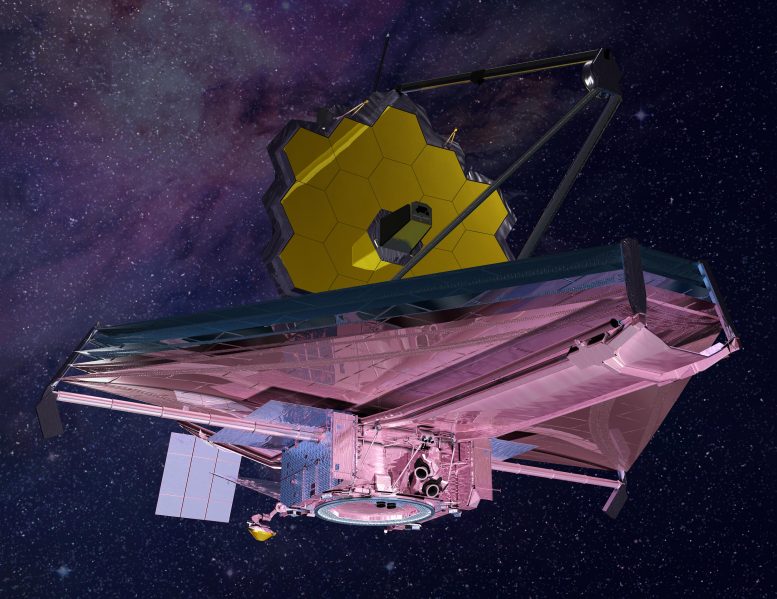
Telescopes Are Time Machines
Interestingly, astrophysicists armed with powerful telescopes possess a unique form of time travel . As they peer into the vast expanse of the cosmos, they gaze into the past universe. Light from all galaxies and stars takes time to travel, and these beams of light carry information from the distant past. When astrophysicists observe a star or a galaxy through a telescope, they are not seeing it as it is in the present, but as it existed when the light began its journey to Earth millions to billions of years ago.
NASA’s newest space telescope , the James Webb Space Telescope , is peering at galaxies that were formed at the very beginning of the Big Bang , about 13.7 billion years ago.
While we aren’t likely to have time machines like the ones in movies anytime soon, scientists are actively researching and exploring new ideas. But for now, we’ll have to enjoy the idea of time travel in our favorite books, movies, and dreams.
Written by Adi Foord, Assistant Professor of Astronomy and Astrophysics, University of Maryland, Baltimore County.
Related Posts
Turning invisible dark matter into visible light, upgraded ligo reactivated: resumes unraveling universe’s secrets with enhanced gravitational wave detection, dark matter may not exist: these physicists favor of a new theory of gravity, higgs boson may explain the earliest expansion of the universe, theoretical physicists reveal the turbulent nature of black holes, physicists propose higgs boson ‘portal’ to help explain dark energy, physicists discover first direct evidence of pear shaped nuclei in exotic atoms, search for dark matter reveals first hint of wimp, black holes have properties that resemble the dynamics of solids and liquids.
Until the problem of the second law of thermodynamics(entropy) is solved, the concept of time travel will remain the subject of science fiction. Since this is a basic law of our universe, there is no conceivable way that we know of to do this. The great thing about our knowledge of the universe is that it continues to grow and with that our view of what is possible continues to change. After all, at one time it was believed we could never leave earth!
The 7 planets are soul pollen in the space @ life has been the world has been prepared @ The pollen of the universe is hidden @ Around the axis of the galaxy, the universe is hidden@@ The pollen of the galaxies is a hidden cluster Itis made that we thought about what wisdom is in God’s work and how it is arranged in the form of words.The verse that is made is as follows @@ John, you are in time @ worlds, planets around the axis of the branches of galaxies @@ 8 Prophets, divine prophets, God-aware witnesses @ God’s words of revelation, they are aware @@ 48 What the words of revelation that every prophet has about @ sometimes Sometimes the message of God has become a verbal cliché in the head @@ 62 The message of God was given to every prophet @ The message was made around the power of God @@ 46 The truth of the religions of the cradle of time is said in the world @ Prophets always came for justice in time @@ 62 A warrior became brave in time @ Delaver Ghahrmani Boud Taarani@@ 43 Omar Noah never died, who knows!@ Imransan Is there an unseen world, immortality!?@@ 49 Men’s rights in the sign @ Human rights, the observance of world justice @@ 40 We have God’s love @ A love that is not patched, separation!!!: @@ 39 Take one word from the end of the first and second stanzas to the bottom of these eight verbal verses, and this sentence is made @@ God-aware, the world is born, you know the sign of God @ Agah,the beginning of time, the world, eternity, the world of separation @@ The meaning of this sentence is That God, who before us humans lived on the earth, formed the earth’s crusts with full knowledge, and we humans know the sign of God, which is on the earth, on the continents and countries, and some names have been shown by God for our knowledge since the end of time.In a later video, if I have a lifetime left, I will explain exactly about these poems, God willing @@ The word of the Prophet 17 is the 17th and Muhammad (PBUH) said that the Bedouin Arabs should pray 17 rakats so that theyperform ablution and be clean and not kill and loot.From the caravans, these were all God’s will, and he is good everywhere, in every nation, God does not like evildoers, sinners, and oppressors.Muhammad (PBUH) was God’s last messenger to the Arab people, he was God’s best prophet, and the third verse is because they do not accept Muhammad (PBUH).Some Iranians who were in contact with me, that’s why in the third verse of this surah, he said that his message was given to every prophet, the message is based on divine power, and the word truth, the first two letters of which istruth, is truth, and truth is the 43rd and forty-third word, and the word is time.It is exactly 46, and this song of the Prophets was revealed at the age of 46 ببخشید اگر قبلآ مطالبی فرستادم که به مذاهب مذاهم ارتباط داد شاید به درد شما نمیخورد من در کامنت های بعدی سعی میکنم از نجوم و حیات زمین سخن بگویم این چند بیت را به خارجی انگلیسی که تبدیل کردم معنی آن حیرت انگیز تعغیر کرد گفتم برای شما بفرستم و بداند که این کلام من نبوده کلام خداوند بوده شما نظرتان در مورد خداوند چیست من میگویم خداوند که پدر ومادر انسان بودند قادر به ساختن ما بودند اما آیا آنها قادر به ساختن ستاره ها هم بودند
Your comment has validity to God. But it surely has no place here, it is only fare if the hole comment were in english and has less of a convincing push in a belief a person either believes or not.
It’s too bad physics can’t come to a complete consensus about time, I would like to add some thought about discoveries it has been proven that time travels in only one direction forward, the experiment dealt with light thru glass and how it reacts in the middle and what change happens after light exits the other side, a simple explanation of this experiment. Brings me to theorize and start that time existed before the big bang and is outside of our universes influence, when time is acted on by gravity the ( Form ) of time is changed until the influence no longer has effect, this could go hand in hand with light photons the photon has a influence in the Form that time has. This can not be a observed difference unless we were to see beyond the speed of light. We do agree that physics changes at a subatomic state and also does some strange changing once the speed of light has been exceeded.
The experiment I referred to was posted on IFL in October 2023 headlined ( Solution to complex light problem shows that time can only go Forward ).
One of the problem with travel time is the one people keep forever. And, that is that the earth is always move through space. Matter of fact, the earth is not in the same place that it was 50 years ago. So you will have to move through space as well as time.
Ironically, the only science fiction that seems to handle this is the original story “The Time Machine”.
Time travel is happening now. It has been done since the 1950s. The method satisfies all the requirements. Traveler can’t change the past, but only observe. You can’t go farther back than when the machine was first invented (1950s). There’s one more limitation, you can only observe what the machine was directed. The time machine, the common video camera, and video tape recorder. Now it’s the camera, and file capture computer. Yes, viewing a video tape is effectively going back in time. It’s more than the video, it’s the sound too. There are working versions of smell, and touch which can be recorded too. If you record, and replicate all the senses, you have effectively complete time travel. The most primitive form is the picture. This technology has been around for thousands of years, and is manually intensive. Later many pictures were strung together to make a film. Using a camera to record film was the first example of complete visual time travel (back to when the film was made). Later sound was added, and we have the movies. A way of going back in time that included sight, and sound. Now we have video systems (YouTub) that can play back past events selected by you. Yes, video systems are virtual time travel machines we have now.
How Stellar Cannibalism Illuminates Cosmic Evolution
جزایر فیلیپین دایناسوری که توسط انسان خلق شده در بیش ده ها میلیون سال و بخاطر ریخته شدن دوهزار متر خاک غرق شده بخاطر بالا آمدن آب اقیانوس اما جزایر فیلیپین شبیه دایناسوریست
The address of the above comment on the site about a thief who was trained by a dinosaur bird who was trained by humans tens of millions of years ago and who arrested murderers and robbers.The police were arrested by big birds.don’t the scientists of the world think about this?They were buried in the bed of important cities, they were buried with all the tools and machines, the traces of humans tens of millions of years ago, they had a civilization and a history of hundreds of thousands of years, they built a base underthe earth, from the meteorites that explode from the planets when they hit the sun, and they knew that several thousand meters of soil is poured on the surface of the seas and islands, and they knew that the shapes they made of the islands in thecountry of Papua may go under the ocean, of course, the Philippine islands.The picture is of a baby dinosaur that went under the ocean, but the northern island of Australia, which is Papua, is quite clear.It is a big dinosaur whose tail is towards the east and its mouth is open towards the west.There is the Philippines, but it was more difficult to take the soil to the Philippine islands to create a dinosaur than the island of Papua, that is why the height of the soil in the Philippines is lower, and when the meteorites fell a few kilometerson the surface of the ocean, the image created by humans under the ocean in the shape of a dinosaur is hidden in the American continent The picture is of a bird in the shape of a dinosaur that is flying, and this bird was made to flyby the Indians of the tribe, that bird was talking to people, but its spirit might have heard something from the police because a thief while in the bird’s mouth He was handcuffed by the police and the weapon, which is a machine gun, is fromthe east of the American continent on the coast
The country of Florida is a machine gun.When you continue to New York City, you will reach the mouth of the dinosaur, where a thief is trapped in the mouth of a bird, and the little finger of the police handcuffed the thief’s hand, and a small colt is in the hand ofthe thief, who the police caught in the mouth of the dinosaur.put in the mouth of the bird dinosaur, you can clearly see that the thief fell on the ground and was shot in the head, and it is clear that his forehead was pierced, the bird’s mouth is open in flight, the head of the birdis from the east of the American continent, and a fish is placed in the bird’s mouth in the water of the ocean.The stretched glove of the police, which is in the form of a fist, with a handcuff attached to the left hand of the thief who fell on the ground in the sea and the mouth of the bird, the head of the thief and the killer, is located towards the southwest and west coast of America.All these images were created from the American continent and islands by Humans were created, but they didn’t have enough fuel and time to create more accurate images and meteorites ruined the beauty of the images, but it is clear that all these changes were createdby humans, but you have to consider that two thousand meters of soil from meteorites are fish.And they buried the whales under the beaches, and after a very long time, the bodies of the whales turned into oil under the two thousand meters of soil on the beaches, and on the other hand, the presence of two thousand meters of soil onthe surface of the seas and droughts could not make the created images disappear.
Save my name, email, and website in this browser for the next time I comment.
Type above and press Enter to search. Press Esc to cancel.
Time Travel Probably Isn't Possible—Why Do We Wish It Were?
Time travel exerts an irresistible pull on our scientific and storytelling imagination.
Since H.G. Wells imagined that time was a fourth dimension —and Einstein confirmed it—the idea of time travel has captivated us. More than 50 scientific papers are published on time travel each year, and storytellers continually explore it—from Stephen King’s JFK assassination novel 11/22/63 to the steamy Outlander television series to Woody Allen’s comedy Midnight in Paris . What if we could travel back in time, we wonder, and change history? Assassinate Hitler or marry that high school sweetheart who dumped us? What if we could see what the future has in store?
These are some of the ideas that bestselling author James Gleick explores in his thought-provoking new book, Time Travel: A History. Speaking from his home in New York City, he recalls how Stephen Hawking once sent out invitations to a party that had already taken place ; why the Chinese government has branded time travel as “incorrect” and “frivolous” ; and how the idea of time travel is, ultimately, about our desire to defeat death.
Let’s cut right to the chase: What is time?
Oh, no, you didn’t! [ Laughs. ] In A.D. 400, St. Augustine said—and many people have said the same thing since, either quoting him consciously or unconsciously—“What, then, is time? If no one asks me, I know. If I wish to explain it to one that asks, I know not.” I think that is actually not a quip, but quite profound.
The best way to understand time is to recognize that we actually are very sophisticated about it. Over the past century-plus, we’ve learned a great deal. The physicist John Archibald Wheeler said, “Time is nature’s way to keep everything from happening all at once.” If you look it up in a dictionary, you get stuff like, “The general term for the experience of duration.” But that’s just completely punting because what is duration ?
I try to steer away from aphorisms and dictionary definitions, just to say two things. First, that we have a lot of contradictory ways of talking about time. We think of time as something we waste, spend, or save, as if it’s a quantity. We also think of time as a medium we are passing through every day, a river carrying us along. All of these notions are aspects of a complicated subject that has no bumper sticker answer.
When does the idea of time travel first appear in the West? And how did it impact popular culture?
I assumed, as a person who always read sci-fi a lot when I was a kid, that time travel is an obvious idea we’re born knowing and fantasizing about. And that it must always have been part of human culture, that there must be time travel Greek myths and Chinese legends. But there aren’t! Time travel turns out to be a very new idea that essentially starts with H.G. Wells’s 1895 novel, The Time Machine . Before that nobody thought of putting the words time and travel together. The closest you can come before that is people falling asleep, like Rip Van Winkle, or fantasies like Charles Dickens’s A Christmas Carol .
Become a subscriber and support our award-winning editorial features, videos, photography, and much more.
For as little as $2/mo.
The beginning of my book is an attempt to answer the question, “Why? Why not before? Why suddenly at the end of the 19 th century was it possible— necessary— for people to dream up this crazy fantasy?” Even though it’s H.G. Wells who does it, people pick up his ball very quickly and run with it. You find it in American science fiction that started appearing in pulp magazines in the 1920s and 1930s, or in the great new modernist literature of Marcel Proust’s In Search of Lost Time , James Joyce, and Virginia Woolf.
All these writers were suddenly making time their explicit subject, twisting time in new ways, inventing new narrative techniques to deal with time, to explore the vagaries of memory or the way our consciousness changes over time.
In 1991, Stephen Hawking wrote a paper called “Chronology Protection Conjecture , ” in which he asked: If time travel is possible, why are we not inundated with tourists from the future? He has a point, doesn’t he?
Yes! He even scheduled a party and sent out an invitation inviting time travelers to come to a party that had taken place in the past. Then he observed that none of them had shown up. [Laughs.] Hawking is one of these physicists who love playing with the idea of time travel. It’s irresistible because it’s so much fun! When he talks about the paradoxes of time travel it’s because he’s reading the same science fiction stories as the rest of us.
The paradoxes started appearing in magazines aimed mostly at young people in the 1920s. Somebody wrote in and said, “Time travel is a weird idea, because what if you go back in time and you kill your grandfather? Then your grandfather never meets your grandmother and you’re never born.” It’s an impossible loop.
Hawking, like other physicists, decided, “Time is my business. What if we take this seriously? Can we express this in physical terms?” I don’t think he succeeded but what he proposed was that the reason these paradoxes can’t happen is because the universe takes care of itself. It can’t happen because it didn’t happen. That’s the simple way of saying what the chronology protection conjecture is.
How have the Internet and other new technologies changed our perception and experience of time?
We are just beginning to see what the Internet is doing to our perception of time. We are living more and more in this networked world in which everything travels at light speed. We are multitasking and experiencing new forms of simultaneity, so the Internet appears to us as a kind of hall of mirrors. It feels as though we’re embedded in an ever expanding present.
Our sense of the past changes because in some ways the past becomes more vivid than ever. We’re looking at the past on our video screens and it’s just as vivid if the movie is about something that happened 20 years ago, as if it is a live stream. We can’t always tell the difference. On the other hand, the past that’s more distant—and isn’t available in video form—starts to seem more remote and fuzzier. Maybe we are forgetting how to visualize the past from reading histories. We’re entering a new period of time confusion, in which we suddenly find ourselves in what looks like an unending present.
In 2011, the Chinese government issued an extraordinary denunciation of the idea of time travel. What was their beef?
They thought it was corrupting and decadent. It’s a reminder that time travel is neither a simple nor innocent idea. It’s very powerful. It enables us to imagine alternative universes, and this is another line that science fiction writers have explored. What if someone was able to go back in time and kill Hitler?
Time travel is also a powerful way of allowing us to imagine what the future might bring. A lot of futurists nowadays tend to be dystopian. Time travel gives us ways of exploring how the worst tendencies of our current societies could grow even worse. That’s what George Orwell did in 1984 . I imagine the Chinese government doesn’t particularly want the equivalent of 1984 to be published in Beijing. [ Laughs. ]
You May Also Like
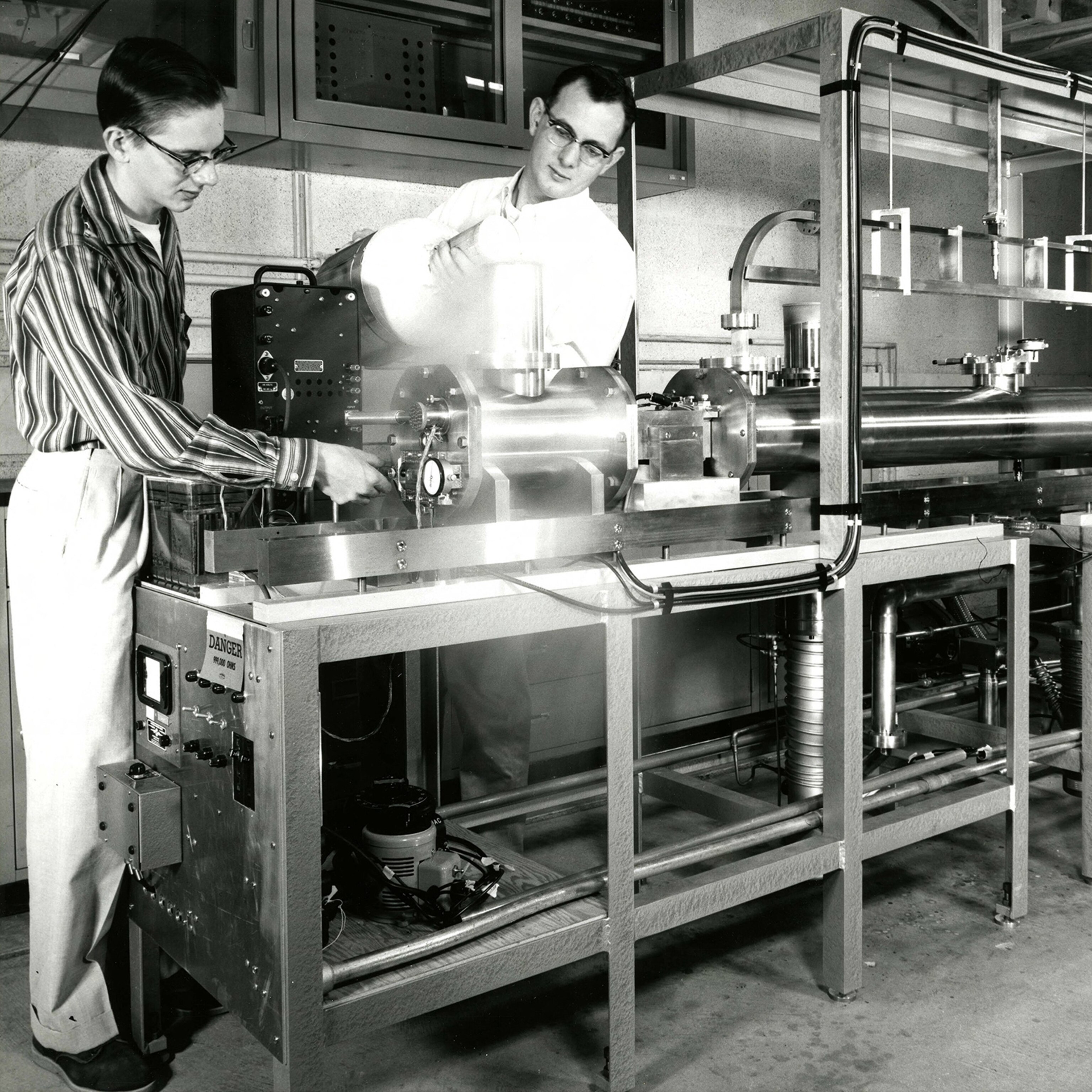
What's a leap second—and why is it going away for good?

This 2,200-year-old slab bears the world’s first mention of leap year

There’s a better way to wake up. Here’s what experts advise.
More than 50 scientific papers a year are now published on the idea of time travel. why are scientists drawn to the subject.
Scientists live in the same science fictional universe as all the rest of us. Time travel is a sexy and romantic idea that appeals to the physicist as much as it appeals to every teenager. I don’t think scientists are ever going to solve the problem of time travel for us but they still love to talk about wormholes and dark matter.
There’s a fascinating coincidence in the early history that when H.G. Wells needed to set the stage for his time machine hurtling into the future, he decided not to just jump right into his story but set the scene with a framing device—his time traveler lecturing a group of friends on the science of time—in order to justify the possibility of a time machine. His lecture introduces the idea that time is nothing more than a fourth dimension, that traveling through time is analogous to traveling through space. Since we have machines that can take us into any of the three special dimensions, including balloons and elevators, why shouldn’t we have a machine able to travel through the fourth dimension?
A decade later, Einstein burst onto the scene with his theory of relativity in which time is a fourth dimension , just like space. Soon after that, Hermann Minkowski pronounced that, henceforth, we were not going to talk about space and time as separate quantities but as a union of the two, spacetime , a four-dimensional continuum in which the future already exists and the past still exists.
I’m not claiming that Einstein read H.G. Wells 10 years before. But there was something in the air that both scientists and imaginative writers were empowered to visualize time in a new way. Today, that’s the way we visualize it. We’re comfortable talking about time as a fourth dimension.
You quote Ursula K. Le Guin , who writes, “Story is our only boat for sailing on the river of time.” Talk about storytelling and its relationship to time.
One of the things that has happened, along with our heightened awareness of time and its possibilities, is that people who invent narratives have learned very clever new techniques. Literal time travel is only one of them. You don’t actually need to send your hero into the future or into the past to write a story that plays with time in clever new ways. Narrative is also how everybody, not just writers, constructs a vision of our own relationship with time. We imagine the future. We remember the past. When we do that, we’re making up stories.
Psychologists are learning something that great storytellers have known for some time, which is that memory is not like computer retrieval. It’s an active process. Every time we remember something we are remembering it a little bit differently. We’re retelling the story to ourselves.
If time travel is impossible, why do we continue to be so fascinated with the idea?
One of the reasons is we want to go back and undo our mistakes. When you ask yourself, “If I had a time machine, what would I do?” sometimes the answer is, “I would go back to this particular day and do that thing over.” I think one of the great time travel movies is Groundhog Day , the Bill Murray movie where he wakes up every morning and has to live the same day over and over again. He gradually realizes that perhaps fate is telling him he needs to do it over, right. Regret is the time traveler’s energy bar. But that’s not the only motivation for time travel. We also have curiosity about the future and interest in our parents and our children. A lot of time travel fiction is a way of asking questions about what our parents were like, or what our children will be like.
At some point during the four years I worked on this book, I also realized that, in one way or another, every time travel story is about death. Death is either explicitly there in the foreground or lurking in the background because time is a bastard, right? Time is brutal. What does time do to us? It kills us. Time travel is our way of flirting with immortality. It’s the closest we’re going to come to it.
This interview was edited for length and clarity.
Simon Worrall curates Book Talk . Follow him on Twitter or at simonworrallauthor.com .
Related Topics

Why daylight saving time exists—at least for now

Leap year saved our societies from chaos—for now, at least

A Year After Everest Disaster, This Sherpa Isn't Going Back

Does eating close to bedtime make you gain weight? It depends.
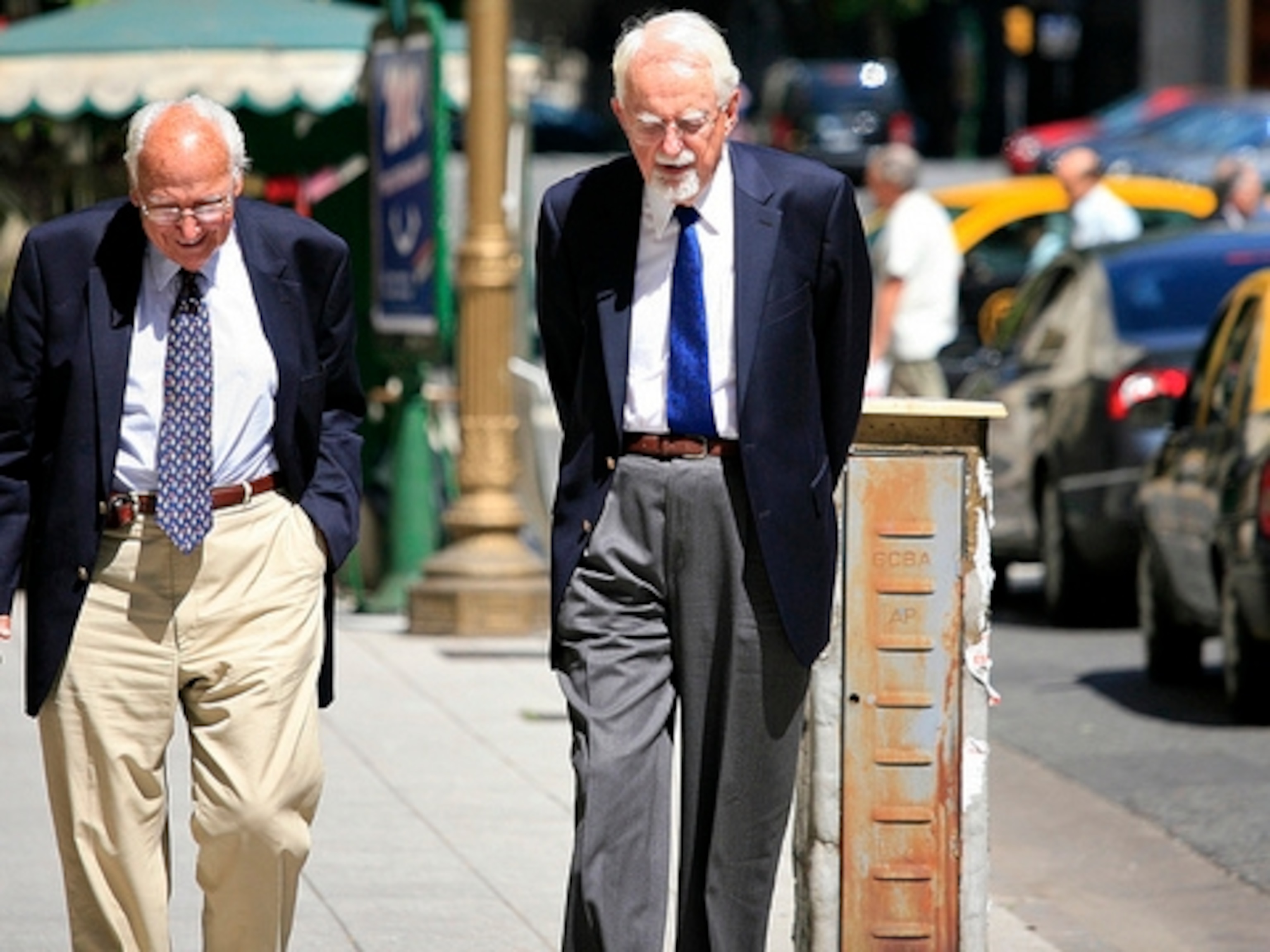
Primed by expectations – why a classic psychology experiment isn’t what it seemed
- Interactive Graphic
- Photography
- Environment
History & Culture
- History & Culture
- The Big Idea
- History Magazine
- Paid Content
- Terms of Use
- Privacy Policy
- Your US State Privacy Rights
- Children's Online Privacy Policy
- Interest-Based Ads
- About Nielsen Measurement
- Do Not Sell or Share My Personal Information
- Nat Geo Home
- Attend a Live Event
- Book a Trip
- Inspire Your Kids
- Shop Nat Geo
- Visit the D.C. Museum
- Learn About Our Impact
- Support Our Mission
- Advertise With Us
- Customer Service
- Renew Subscription
- Manage Your Subscription
- Work at Nat Geo
- Sign Up for Our Newsletters
- Contribute to Protect the Planet
Copyright © 1996-2015 National Geographic Society Copyright © 2015-2024 National Geographic Partners, LLC. All rights reserved
Advertisement
Quantum time travel: The experiment to 'send a particle into the past'
Time loops have long been the stuff of science fiction. Now, using the rules of quantum mechanics, we have a way to effectively transport a particle back in time – here’s how
By Miriam Frankel
29 May 2024

Ryan wills/istock/Amtitus
When Seth Lloyd first published his ideas about quantum time loops, he hadn’t considered all the consequences. For one thing, he hadn’t anticipated the countless emails he would get from would-be time travellers asking for his help. If he could have his time over again, he jokes, he “probably wouldn’t have done it”.
Sadly, Lloyd, a physicist at the Massachusetts Institute of Technology, won’t be revisiting years gone by. Spoiler alert: no one will go back in time during the course of this article. But particles? That is another matter.
Theoretical routes to the past called time loops have long been hypothesised by physicists. But because they are plagued by impracticalities and paradoxes, they have been dismissed as impossible for just as long. But now Lloyd and other physicists have begun to show that in the quantum realm, these loops to the past are not only possible, but even experimentally feasible. In other words, we will soon effectively try to send a particle back in time.
Rethinking reality: Is the entire universe a single quantum object?
If that succeeds, it raises the possibility of being able to dispatch, if not people, then at least messages in the form of quantum signals, back in time. More importantly, studying this phenomenon takes us to the heart of how cause and effect really work, what quantum theory means and perhaps even how we can create a successor theory that more fully captures the true nature of reality.
In physics, time loops are more properly known as closed time-like curves (CTCs). They first arose in Albert Einstein’s theory of general relativity…
Sign up to our weekly newsletter
Receive a weekly dose of discovery in your inbox! We'll also keep you up to date with New Scientist events and special offers.
To continue reading, subscribe today with our introductory offers
No commitment, cancel anytime*
Offer ends 2nd of July 2024.
*Cancel anytime within 14 days of payment to receive a refund on unserved issues.
Inclusive of applicable taxes (VAT)
Existing subscribers
More from New Scientist
Explore the latest news, articles and features

New spin on quantum theory forces rethink of a fundamental physics law
Subscriber-only

Existing quantum devices could be used to disrupt the stock market

Quantum dots help destroy ‘forever chemicals’ with light

Time travel sci-fi novel is a rip-roaringly good thought experiment
Popular articles.
Trending New Scientist articles
Time Travel

Arguably, we are always travelling though time, as we move from the past into the future. But time travel usually refers to the possibility of changing the rate at which we travel into the future, or completely reversing it so that we travel into the past. Although a plot device in fiction since the 19 th Century (see the section on Time in Literature ), time travel has never been practically demonstrated or verified, and may still be impossible.
Time travel is not possible in Newtonian absolute time (we move deterministically and linearly forward into the future). Neither is it possible according to special relativity (we are constrained by our light cones). But general relativity does raises the prospect (at least theoretically) of travel through time, i.e. the possibility of movement backwards and/or forwards in time, independently of the normal flow of time we observe on Earth, in much the same way as we can move between different points in space.
Time travel is usually taken to mean that a person’s mind and body remain unchanged, with their memories intact, while their location in time is changed. If the traveller’s body and mind reverted its condition at the destination time, then no time travel would be perceptible.
Time Travel Scenarios
Although, in the main, differing fundamentally from the H.G. Wells concept of a physical machine with levers and dials, many different speculative time travel solutions and scenarios have been put forward over the years. However, the actual physical plausibility of these solutions in the real world remains uncertain.
At its simplest, as we have seen in the section on Relativistic Time , if one were to travel from the Earth at relativistic speeds and then return, then more time would have passed on Earth than for the traveller, so the traveller would, from his perspective, effectively have “travelled into the future”. This is not to say that the traveller suddenly jumped into the Earth’s future, in the way that time travel is often envisioned, but that, as judged by the Earth’s external time, the traveller has experienced less passage of time than his twin who remained on Earth. This is not real time travel, though, but more in the nature of “fast-forwarding” through time: it is a one-way journey forwards with no way back.
There does, however, appear to be some scientific basis within the Theory of Relativity for the possibility of real time travel in certain scenarios. Kurt Gödel showed, back in the early days of relativity, that there are some solutions to the field equations of general relativity that describe space-times so warped that they contain “ closed time-like curves ”, where an individual time-cone twists and closes in on itself, allowing a path from the present to the distant future or the past. Gödel’s solution was the first challenge in centuries to the dominant idea of linear time on which most of physics rests. Although a special case solution, based on an infinite, rotating universe (not the finite, non-rotating universe we actually find ourselves in), other time travel solution have been identified since then that do not require an infinite, rotating universe, but they remain contentious.
In the 1970s, controversial physicist Frank Tipler published his ideas for a “time machine”, using an infinitely long cylinder which spins along its longitudinal axis, which he claimed would allow time travel both forwards and backwards in time without violating the laws of physics, although Stephen Hawking later disproved Tipler’s ideas.
In 1994, Miguel Alcubierre proposed a hypothetical system whereby a spacecraft would contract space in front of it and expand space behind it, resulting in effective faster-than-light travel and therefore (potentially) time travel, but again the practicalities of constructing this kind of a “ warp drive ” remain prohibitive.

Other theoretical physicists like Kip Thorne and Paul Davies have shown how a wormhole in space-time could theoretically provide an instantaneous gateway to different time periods, in much the same way as general relativity allows the theoretical possibility of instantaneous spatial travel through wormholes. Wormholes are tubes or conduits or short-cuts through space-time, where space-time is so warped that it bends back on itself, another science fiction concept made potential reality by the Theory of Relativity. The drawback is that unimaginable amounts of energy would be required to bring about such a wormhole, although experiments looking into the possibility of creating mini-wormholes and mini-black holes are being carried out at the particle accelerator at CERN in Switzerland. It also seems likely that such a wormhole would collapse instantly into a black hole unless some method of holding it open were devised (possibly so-called “negative energy”, which is known to be theoretically possible, but which is not yet practically feasible). Stephen Hawking has suggested that radiation feedback, analogous to feedback in sound, would destroy the wormhole, which would therefore not last long enough to be used as a time machine. Actually controlling where (and when) a wormhole exits is another pitfall.
Another potential time travel possibility, although admittedly something of a long shot, relates to cosmic strings (or quantum strings ), long shreds of energy left over after the Big Bang, thinner than an atom but incredibly dense, that weave through the entire universe. Richard Gott has suggested that if two such cosmic strings were to pass close to each other, or even close to a black hole, the resulting warpage of space-time could well be so severe as to create a closed-time-like curve. However, cosmic strings remain speculative and the chances of finding such a phenomenon are vanishingly small (and, even if it were possible, such a loop may well find itself trapped inside a rotating black hole).
Physicist Ron Mallet has been looking into the possibility of using lasers to control extreme levels of gravity, which could then potentially be used to control time. According to Mallet, circulating beams of laser-controlled light could create similar conditions to a rotating black hole, with its frame-dragging and potential time travel properties.
Others are looking to quantum mechanics for a solution to time travel. In quantum physics, proven concepts such as superposition and entanglement effectively mean that a particle can be in two (or more) places at once. One interpretation of this (see the section on Quantum Time ) is the “ many worlds ” view in which all the different quantum states exist simultaneously in multiple parallel universes within an overall multiverse. If we could gain access to these alternative parallel universes, a form of time travel might then be possible.
At the sub-sub-microscopic level – at the level of so-called quantum foam , tiny bubbles of matter a billion-trillion-trillionths of a centimetre in length, perpetually popping into and out of existence – it is speculated that tiny tunnels or short-cuts through space-time are constantly forming, disappearing and reforming. Some scientists believe that it may be possible to capture such a quantum tunnel and enlarge it many trillions of times to the human scale. However, the idea is still at a very speculative stage,
It should be noted that, with all of these schemes and ideas, it does not look to be possible to travel any further back in time that the time at which the travel technology was devised.
Faster-Than-Light Particles
The equations of relativity imply that faster-than-light ( superluminal ) particles, if they existed, would theoretically travel backwards in time. Therefore, they could, again theoretically, be used to build a kind of “ antitelephone ” to send signals faster than light, and thus communicate backwards in time. Although the Theory of Relativity disallows particles from accelerating from sub-light speed to the speed of light (among other effects, time would slow right down and effectively stop for such a particle, and its mass would increase to infinity), it does not preclude the possibility of particles that ALWAYS travel faster than light. Therefore, the possibility does still exist in theory for faster-than-light travel in the case of a particle with such properties.
There is a rather strange theoretical particle in physics called the tachyon that routinely travels faster than light, with the corollary that such a particle would naturally travel backwards in time as we know it. So, in theory, one could never see such a particle approaching, only leaving, and the particle could even violate the normal order of cause and effect. For a tachyon, the speed of light is the lower speed limit, while the upper speed limit is infinity, and its speed increases as its energy decreases. Even stranger, the mass of a tachyon would technically be an imaginary number (i.e. the number squared is negative), whatever that might actually mean in practice.
It should be stressed that there is no experimental evidence to suggests that tachyons actually exist, and many physicists deny even the possibility. A tachyon has never been observed or recorded (although the search continues, particularly through analysis of cosmic rays and in particle accelerators), and neither has one ever been created, so they remain hypothetical, although theory strongly supports their existence.
Research using MINOS and OPERA detectors has suggested that tiny particles called neutrinos may travel faster than light. Other more recent research from CERN, however, has put the findings into dispute, and the matter remains inconclusive. Neutrinos are not merely hypothetical particles like tachyons, but a well-known part of modern particle physics. But they are tiny, almost-massless, invisible, electrically neutral, weakly-interacting particles that pass right through normal matter, and consequently are very difficult to measure and deal with (even their mass has never been measured accurately).
Time Travel Paradoxes
The possibility of travel backwards in time is generally considered by scientists to be much more unlikely than travel into the future. The idea of time travel to the past is rife with problems, not least the possibility of temporal paradoxes resulting from the violation of causality (i.e. the possibility that an effect could somehow precede its cause). This is most famously exemplified by the grandfather paradox : if a hypothetical time traveller goes back in time and kills his grandfather, the time traveller himself would never be born when he was meant to be; if he is never born, though, he is unable to travel through time and kill his grandfather, which means that he WOULD be born; etc, etc.
Some have sought to justify the possibility of time travel to the past by the very fact that such paradoxes never actually arise in practice. For example, the simple fact that the time traveller DOES exist at the start of his journey is itself proof that he could not kill his grandfather or change the past in any way, either because free will ceases to exist in the past, or because the outcomes of such decisions are predetermined. Or, alternatively, it is argued, any changes made by a hypothetical future time traveller must already have happened in the traveller’s past, resulting in the same reality that the traveller moves from.
Theoretical physicist Stephen Hawking has suggested that the fundamental laws of nature themselves – particularly the idea that causes always precede effects – may prevent time travel in some way. The apparent absence of “tourists from the future” here in our present is another argument, albeit not a rigorous one, that has been put forward against the possibility of time travel, even in a technologically advanced future (the assumption here is that future civilizations, millions of years more technologically advanced than us, should be capable of travel).
Some interpretations of time travel, though, have tried to resolve such potential paradoxes by accepting the possibility of travel between “ branch points ”, parallel realities or parallel universes , so that any new events caused by a time traveller’s visit to the past take place in a different reality and so do not impact on the original time stream. The idea of parallel universes, first put forward by Hugh Everett III in his “ many worlds ” interpretation of quantum theory in the 1950s, is now quite mainstream and accepted by many (although by no means all) physicists.
>> Quantum Time
Physics of Time
Random pages.
Full-Time Travel: 12 Essential Things You Need To Know
Full-time travel is a dream for many. I remember my first ever backpacking trip, even though it was several months long, I knew it would have to come to an end at some point, and I was always in awe of the people I met on the road who had cracked the code, and were traveling full-time.
On that trip, I met Kelli, and today, we have been traveling full-time together for five years, without plans to stop any time soon. We never decided to travel full-time, we simply set off on one trip that turned into another and another and another. We have traveled to over 80 countries, we have traveled by foot, bus, train, plane, three converted vans and most recently our sailboat Whisper .
Over those five years, we have learned a lot and it has been an incredibly special period in our lives. It probably comes as no surprise that we strongly recommend full-time or at least indefinite travel for everyone at least once in their life. The good news is, the dream of traveling full-time has never been more within reach.
Here are 10 things you need to know about full-time travel in 2023.
Why Travel Full-Time?
For us, there are many advantages to traveling full-time. Beyond the general benefits of travel such as broadening your perspective, improving communication skills, and exposing yourself to new cultures, people, and ideas there are some additional upsides that come with full-time travel.
Traveling full time affords us a sense of freedom we weren’t able to find living in one place and working 9 – 5 in traditional jobs. The ability to chart a course and set off to a new destination any day of the week or to pick a new country to visit next month is extremely liberating.
You can save money (if you can continue to earn money). While travel is generally considered an expensive pastime. Traveling full-time is surprisingly inexpensive when compared to living in one place and traveling occasionally. Expenses such as rent or mortgage, car payments, home maintenance, and household goods, can be deleted or significantly reduced. The expense of long return flights, short hotel accommodations, and vehicle rental is mitigated when you can travel slowly and flexibly. Traveling in a variety of countries including those with lower costs of living than your home country also brings down the average costs of living and traveling.
The opportunity to travel slower and to stay in a region longer offers an even deeper travel experience. Full-time travel allows us the time to learn a little of the language, meet locals and go beyond the tourist attractions and hopefully understand more about everyday life in a new place. Of course, a full-time traveler is still an outsider looking in, but if you use the opportunity full-time travel provides to go a little deeper then your travel experience can be even more rewarding.
Another benefit of traveling full-time is the opportunity to create income from travel. We have done so by creating a blog and a vlog, others use social media or their cameras to create travel content for profit.
When is the Perfect Time to Start traveling?
Is 30 too late to travel the world? Is 18 too young? What about 50? Truthfully there is no perfect age nor a perfect moment in life to start traveling.
One of the hardest things about setting off for any sort of long-form travel is that it is never really the right time. You are due for that promotion at work, your second cousin might be getting married next year, and you’ve just struck up an unlikely friendship with the cat next door.
To achieve your dream you will always need to sacrifice, and big dreams require a big sacrifice. You will need to leave everything behind. If you want to travel full-time, work out how much time you need to get your affairs in order, and save enough money to begin your journey, circle a date in the calendar, and start working toward your dream, today.
What’s the Difference Between Full-Time Travel and Other Travel?
Full time-travel is a lot different from a holiday, extended business trip or even that month-long Contiki bus tour you took through Eastern Europe at eighteen. Full-time travel requires planning, hard work, and discipline.
A sustainable approach to full-time travel requires careful planning. From researching destinations, working out schedules, and budgeting you will need to be thoroughly prepared. While a holiday doesn’t necessarily require such careful planning full-time travel requires things like long-term visas, understanding foreign tax obligations, and researching internet speeds in far-flung locales.
While traveling is often considered a relaxing and rejuvenating experience, full-time travel is often not. For many, if not most, people planning to travel full-time, income is required. This means on top of planning, traveling, and experiencing new places, you will need to juggle a job, something that is more difficult when you are on the move. In addition to managing your workload, challenges like finding suitable working environments with reliable wifi connections, and dealing with everchanging timezones can be both stressful and time-consuming.
A holiday or even extended travel has an end date which means we can indulge ourselves without restriction. We can blow the budget, eat unhealthy food, skip exercising, or drink too much, safe in the knowledge that our wallets and waistlines will eventually recover. Without an end date, full-time travel would quickly become a full-time nightmare if we took this same attitude. But without a set schedule or routine full-time travel requires discipline to remind ourselves that despite the scenes outside our window, or the thrill of waking up somewhere new, we are, in fact, not on holiday.
Despite these very real challenges, if you can handle them there is no doubt that full-time travel offers a level of freedom and excitement that is hard to match with a more traditional lifestyle.
Can Full-Travel Lead to Burnout?
Yes. For all the reasons mentioned above, full-time travel can be exhausting. Travel fatigue is real and the stresses of working and traveling at the same time can quickly become overwhelming. As a full-time traveler, it is important to be in touch with your stress level and take proactive measures when things get too much. When you begin to feel travel fatigue it is vital that you pause and take care of your needs and rest. Slow down and travel more slowly, take some time off work, or just check into a nice hotel and sleep for a weekend. But take time to take care of yourself.
Does Traveling Full-Time Put Pressure On a Relationship?
If you travel with a partner it can definitely put pressure on your relationship. Spending life traveling with your one and only sounds pretty romantic and it can be but there are definitely downsides.
Traveling full-time with your partner can add stress to your relationship and without any other outlet this can lead to conflict. It can also affect the romance and intimacy in a relationship. Another negative outcome of traveling full-time with your significant other is co-dependency.
Partners who decide to take the plunge together and travel full-time need to be aware of these pitfalls and have strategies to avoid them.
For more insight into the challenges of traveling full-time together check out these 25 Lessons we learned about living on the road as a couple .
Is Full-Time Travel Isolating?
On our first van life journey together we imagined pulling up in a new spot every night, making friends with other van lifers around a campfire. It rarely happened. And even if you do travel in a way that exposes you to lots of new friends, such as backpacking and staying in rowdy hostels, the intensity and brevity of these connections often exacerbate burnout and can rarely replace the deep long-lasting relationships of family and old friends.
Whether you are traveling by yourself, with your partner, or even with your family, full-time travel can be isolating. Feelings of isolation, of FOMO, and of being ‘left behind’ as our loved ones enter new phases of life without us are frequent on the road and can definitely create a sense of loneliness.
As a full-time traveler, you will need to work extra hard to maintain important relationships far from home.
Despite this, we have found it is possible to maintain important relationships if we put in the work. With today’s technology, it has never been easier to stay in touch with loved ones through messages, video calls, and social media.
Is Travelling Full-Time Dangerous or Scary?
Traveling has, at times, made me feel very scared, sometimes with good reason.
Scary moments that stick out to me, are getting lost in the jungle in Peru, Kelli getting incredibly sick while traveling through a dangerous part of Colombia, Our van being broken into while we were sleeping in it in Mexico, Kelli almost stepping on a dangerous snake in the middle of outback Australia, running out of fuel for our boat 50 kilometers from our final destination in Albania, not being able to find our accommodation in -25 in Kazakhstan in the middle of winter and a hundred other experiences that have felt incredibly scary, especially at the time.
Depending on where you go, completely avoiding dangerous and scary situations while traveling is probably not realistic however minimizing them is possible through proper research, preparation, and common sense. Research your destination and the known risks. Prepare properly to mitigate those risks. Take proper
While traveling full-time will undoubtedly open you up to a variety of new experiences, remember that they won’t always be experiences you necessarily wanted.
Can You Make A Living Traveling Full-Time?
Yes, there is a variety of jobs to fit any type of traveler that can allow you to make a living while traveling full-time.
There are traditional travel jobs like working on a cruise ship or as a flight attendant, becoming a traveling nurse or therapist, an artisan selling their crafts at different markets, or a busker ready to set up on a new street corner each day.
There is also a range of freelance opportunities for those working in the digital space. For people with skills (or those willing to acquire them) in fields like graphic design, video editing, programming, photography, website creation, music, and many other areas where the product can be delivered online, becoming a digital nomad is a real possibility.
Finally, there are more and more opportunities to take roles that until recently only existed onsite and do them remotely. Forward-thinking businesses are increasingly looking to employ remote workers to fill many professional positions. Raising the question …

Is It Possible to Travel and Work Remotely At My Existing Job?
For many, yes! Lots of roles are now able to be done fully remotely.
The age of the digital nomad fully underway providing many freelancers and business owners with the opportunity to deliver their products and services online. Additionally, we are now witnessing the dawn of the corporate nomad , where many companies are allowing employees to carry out their jobs remotely.
In 2019, there were around 15 million remote workers today that number is estimated to be over 45 million. The growth of the nomadic workforce has been exponential, and some sources predict that there will be over 1 billion digital nomads within the next 12 years. The next thing that needs to happen is for governments to react to the implications that this interconnected world, with citizens, spread out across the world.
When we set out to travel full-time Corona was still a beer and finding remote work with reasonable pay was considered a pie-in-the-sky dream.
No one wanted their accountant working from the Amazon jungle, and rightly so, the wi-fi is awful. Nevertheless, we battled through and were able to find enough clients as freelancers to keep us going.
Fast forward to 2023 and the amount of companies willing to let their employees work remotely is growing rapidly. There has never been a better time to take your existing job on the road or transition into a job you can do remotely.
Covid forced a workforce into remote work and the tech followed. We now have incredible tools at our disposal to conduct our jobs from afar. Sophisticated programs to host virtual meetings, rapid advancement of cloud share technology to promote online collaboration, and star link mobile satellite internet for less than $150 a month are all examples of how far the world of remote work has come in just a few short years.
The speed of development of solutions for an increasingly location-independent workforce has been awe-inspiring and we don’t expect this trend to reverse any time soon.
Are There Downsides to Working Remotely While Traveling Full-Time?
There are a number of downsides to working while traveling. Staying connected is often difficult, working in different timezones can be tough to deal with, and remaining visible to your staff, colleagues or managers can be challenging.
Full-time travel means being constantly on the move and trying to ensure a constant and reliable internet connection to dial into meetings or upload work comes with challenges. Nevertheless, internet technology is improving rapidly, and in many places, mobile internet is now sufficient to carry out many jobs. For those whose jobs require access to high-bandwidth internet, we are seeing that the availability is increasing and the price is dropping.
Another downside to traveling and working at the same time is juggling time zones, if you have an employer or clients in one location, then making yourself available to them at a convenient time may require some flexibility in your timetable.
Do Remote Workers Negatively Impact the Communities They Visit?
The rapid rise of an untethered workforce is not without its challenges. We are already seeing the effects of mass migration to certain destinations like Mexico City and Lisbon where an influx of cashed-up remote workers is driving up prices of real estate, and retail and displacing locals, negatively impacting their quality of life.
As a full-time traveler, especially if you are privileged enough to have a job that puts you in the top percentiles of global wealth then you have a responsibility to travel ethically. That means understanding the impact that you and your fellow nomads may be having on the areas you visit. We know to tread lightly when we visit a national park, we need to learn how to tread lightly when we travel to regions long term and think about how we can have a positive contribution to the places we visit without displacing or otherwise impacting local communities.
Hopefully, you found some interesting information about the realities of full-time travel! Did you find something you hadn’t thought of? Did we miss something you’ve discovered traveling full-time? Do you have a question about traveling full-time? Let us know below!
LOOKING FOR MORE Lifestyle Content?
- Life as a Corporate Nomad: Everything You Wanted to Know
- Van Life Apps: 25+ Easy Ways To Simplify Life On The Road
- Van Life or Boat Life? Which Is the Best
- 9 Things to Know for Working from the Road
Want to save this van life couple wisdom for later? Pin it!
In 2016, I had been dumped by my girlfriend, fired from my job, and the lease on my house was running out. Facing moving back in with my parents, 26, jobless and alone I decided to listen to the message the universe was trying to send me. I took off on my first solo backpacking trip, with a one-way ticket to Bangkok and a well-thumbed Lonely Planet guide. From there I wandered Southeast and Central Asia, traveled the Great Steppe, and made my way across Russia and throughout Europe.
In Estonia I met Kelli, who, despite having a less frantic travel style, shared my my restless spirit and passion for exploration. Together, we embarked on a new journey, van life. Over four years we travelled across three different continents with three different vans.
In 2022, as the world began to re-open post COVID we took an opportunity to realise a long held dream, to live aboard a sailboat. Since then we have spent two summers in the Mediterranean, sailing and living aboard our little sail boat Whisper. When we aren't sailing we continue to live our nomadic lifestyle, guided by a philosophy of slow travel and self directed adventure be it by van or backpacking.
We find excitement through our journey into the unknown, stillness and content in the beauty of the places we discover and we find ourselves in the vastness of our world.
Hopefully, we can help you find what you're looking for too. Get lost with us and find your own path.
Leave a Reply Cancel reply
Your email address will not be published. Required fields are marked *
- Skip to primary navigation
- Skip to main content
- Skip to primary sidebar
- Skip to footer
TravelAwaits
Our mission is to serve the 50+ traveler who's ready to cross a few items off their bucket list.
7 Key Things To Consider If You Dream Of Traveling Full-Time

- Full-Time Travel
- News and Tips
- Travel Tips
- Types of Travel
When I quit my job in 2017 to spend a few months traveling in order to find more meaning and purpose in my life and work, I thought I was crazy. The Great Resignation came along a couple of years later, and it turns out I was a trendsetter!
I genuinely thought I was taking a career break; I had planned to travel for 3 to 6 months and then return to “real life.” Instead, I fell in love with full-time travel, and, 4 years later, have been to 27 countries on six continents — and the first 2 years were on my initial budget. If you’ve read my other articles, you’ll know I spent 2 years marooned in New Zealand due to the pandemic, and it isn’t cheap!
More and more people are quitting their jobs and traveling. Some do it solo, others with another. What’s clear is that what started as a few “crazy” people jumping ship is an idea that the pandemic made the new normal. There are many types of full-time travelers; some want to take a break and reconnect to themselves, and others are opting to work remotely and trade a home office for a world office. Still, others have reached retirement, or are about to, and intend to travel the world as the next step in their lives.
The question I’m asked the most often, no matter what kind of full-time traveler they intend to be, is, how do you afford it? As a full-time travel coach , I teach people to afford full-time travel. I’m going to share some of my top tips to help you afford to travel full time, if that’s on your radar. Whether you’re retired, leaving your “normal day job,” or becoming a remote worker, all these tips will help.

Create A Budget
The foundation of affording full-time travel is having a travel budget. There are many factors that go into this, and a lot of the methods have to be customized to your specific goals and assets. That being said, here are some thinking points to guide your travel budget creation.
1. How Long Do You Want To Travel?
The duration of your travel is hugely important. Obviously, money will stretch farther in a shorter period of time than in a longer one. So, if you’re traveling for 3 months on $10,000, you can afford a lot more than you could if you planned to travel for 6 months on that budget. Your desired timeframe is essential to know to set the right travel budget. That’s just the beginning.
2. Where Do You Want To Travel To?
Next, think about where in the world you want to travel to, and what currency you’re traveling on. If your home currency is the dollar or the euro, much of the world will be more affordable to you than those with other currencies. Parts of Southeast Asia and South America will be so inexpensive you’ll be stunned. But an African safari or trip around Europe or America will be more expensive. The places you go play an important role in how far your budget will stretch.
3. How Are You Traveling?
Do you plan to fly, rent cars, take trains, buses, or boats? The methods of transportation you choose have a direct impact on your budget. The more willing and able you are to take buses, the less expensive your travels will be. Obviously, long bus rides can be taxing on the body, so it’s a choice that may be less comfortable.
4. Be Honest About Your Travel Style
If you’re used to vacation travel with a corporate job, you may have stayed in luxury hotels and eaten at some of the best restaurants in the world. If you try to travel full time in this style, you won’t be able to travel long, unless you’re wealthy. (And if you are, good for you!) If you want to make travels last longer, then adapting to a more budget-conscious style will afford you more time. This is a choice you have to make.
I’ve shared a few rooms with roaches and lizards, used shared bathrooms, and lugged my own bags up staircases. But that’s not for everyone. I fell in love with traveling, so I do what I can to extend it. If you prefer luxury travel, be honest about that. The worst thing you can do is travel in a style you hate and find yourself frustrated with the entire experience.

Reconsider How You Use Money
The value of money will change when you travel full time. When you’re in a fixed location, you buy bottles of shampoo, olive oil, and lots of stuff on Amazon you don’t need. When you travel, you want to save money and space. You will most likely carry your own bags, so consider reducing the weight of your luggage — this can be a back and money saver, as you’ll frequently see fees for extra baggage. You’ll change from prioritizing the purchase of souvenirs to buying experiences that you’ll remember for the rest of your life.
5. Save Before You Go
You may realize that you need to create a savings padding before you go, but it can be overwhelming to figure out how to do it. I took a Financial Planning 101 class years ago, and it opened my eyes to spending and savings and allowed me to start being smarter with money. If you’re ever looking for some good reading about how you spend your money, there are some good titles by Olivia Mellan . Though they were written some time ago, I found her insights really helpful, especially around understanding your money spending style — and how to fix it.
The more money you can save before you travel full time, the more time you can travel. This is a good time to get clear on your travel goals and then assess each expense as to whether it takes you toward those goals or away from them. Also, cutting out “nice-to-have” and recurring expenses are great places to start cutting down costs. You can then put that money into your savings account and watch it grow.
6. Save On Flights
If you’re flying, there are some great ways to save on airfare. You likely know that choosing flights with stopovers can save you a lot of money, but, of course, take more time. If you get a credit card that helps you rack up points toward future travel, this can make flying virtually free. There are a few other great strategies to help cut down on flight costs.
Be flexible on the dates you travel. Flying mid-week is often significantly cheaper than flying on a weekend. On a recent trip to Florida from New York City , I shaved $300 off the price by flying on a Wednesday. As a bonus, I also find I get upgraded more on the mid-week flights than on the weekends.
Apps like Secret Flying (or following them on Twitter ) will keep you informed of amazing flight deals and mistake airfares. Note, though, that mistake airfares come with the risk that your ticket might not be honored.
7. Save On Lodging
Since you’ll need a place to rest and shelter every night, anything you can do to reduce this daily cost is key to affording full-time travel, at least if you intend to do it for more than a few months. One way to save is by staying in the same place for more than a week. This is often when discounts kick in. If they don’t, then speak to the property or hotel manager and see if they will reduce your rate for a longer stay.
Housesitting is an ideal way to cut out the cost of accommodations altogether. You typically look after someone’s pets while they’re away, and you can use their kitchen, which helps reduce your food costs as well. If you adore animals, you have the added bonus of wonderful companionship as you travel. However, it can be hard to leave some of the pets behind, speaking from personal experience. Trusted Housesitters is the best-known one, but you can also find in-country petsitting companies.
The advantage of joining an international housesitting service is being able to build up good reviews. However, depending on in-country competition, member prices, and availability, locals may list on a local website.
There are other options, like Couchsurfing and Host A Sister , where you can get a few nights for free at someone’s home. If you’re able to rent your existing home while you travel, that’s a great way to fund your travels.

Traveling Full Time Can Be For Everyone
As you can see, traveling full time is available to anyone, but it requires some in-depth planning and strategies to make it happen. Your unique situation will determine the best ways to save money, earn money while you travel, and how long you can keep going. I jumped in believing my budget would last 3–6 months. The more I traveled and committed to the lifestyle, the more I was able to make that budget last. In the end, my initial budget lasted for over 2 years. This lifestyle truly is available to anyone who wants to do it.
Further Reading:
- 8 Ways My Full-Time International Adventures Have Expanded My Travel Horizons
- How I Found The Best Job Of My Life During Retirement
- Traveling Solo Over 50: 7 Tips From The Experts
- I’ve Been Stuck In New Zealand For 19 Months — Why I Need To Say Thank You

Heather is a full-time travel coach who is passionate about helping professionals seeking more freedom and flexibility to ditch their desk and discover their destiny through full-time travel. She provides her clients with the path to the mindset, money, and mastery to make a full-time travel lifestyle possible. Since quitting, she's become an international best-selling author and is about to do her first TEDx talk! Learn more about Heather's travel adventures on her website, Heather Begins.
Log in or sign up for Rotten Tomatoes
Trouble logging in?
By continuing, you agree to the Privacy Policy and the Terms and Policies , and to receive email from the Fandango Media Brands .
By creating an account, you agree to the Privacy Policy and the Terms and Policies , and to receive email from Rotten Tomatoes and to receive email from the Fandango Media Brands .
By creating an account, you agree to the Privacy Policy and the Terms and Policies , and to receive email from Rotten Tomatoes.
Email not verified
Let's keep in touch.

Sign up for the Rotten Tomatoes newsletter to get weekly updates on:
- Upcoming Movies and TV shows
- Rotten Tomatoes Podcast
- Media News + More
By clicking "Sign Me Up," you are agreeing to receive occasional emails and communications from Fandango Media (Fandango, Vudu, and Rotten Tomatoes) and consenting to Fandango's Privacy Policy and Terms and Policies . Please allow 10 business days for your account to reflect your preferences.
OK, got it!
- What's the Tomatometer®?
- Login/signup
Movies in theaters
- Opening this week
- Top box office
- Coming soon to theaters
- Certified fresh movies
Movies at home
- Fandango at Home
- Prime Video
- Most popular streaming movies
- What to Watch New
Certified fresh picks
- 77% Cuckoo Link to Cuckoo
- 97% Dìdi Link to Dìdi
- 97% Good One Link to Good One
New TV Tonight
- 95% Industry: Season 3
- -- Emily in Paris: Season 4
- 100% Bad Monkey: Season 1
- -- Bel-Air: Season 3
- -- Rick and Morty: The Anime: Season 1
- -- Solar Opposites: Season 5
- -- SEAL Team: Season 7
- -- RuPaul's Drag Race Global All Stars: Season 1
- -- Star Wars: Young Jedi Adventures: Season 2
- -- Worst Ex Ever: Season 1
Most Popular TV on RT
- 59% The Umbrella Academy: Season 4
- 81% A Good Girl's Guide to Murder: Season 1
- 78% Star Wars: The Acolyte: Season 1
- 95% Batman: Caped Crusader: Season 1
- 100% Supacell: Season 1
- 100% Women in Blue: Season 1
- 78% Mr. Throwback: Season 1
- 78% Presumed Innocent: Season 1
- 77% Lady in the Lake: Season 1
- Best TV Shows
- Most Popular TV
- TV & Streaming News
Certified fresh pick
- 95% Industry: Season 3 Link to Industry: Season 3
- All-Time Lists
- Binge Guide
- Comics on TV
- Five Favorite Films
- Video Interviews
- Weekend Box Office
- Weekly Ketchup
- What to Watch
30 Most Popular Movies Right Now: What to Watch In Theaters and Streaming
25 Most Popular TV Shows Right Now: What to Watch on Streaming
What to Watch: In Theaters and On Streaming
Awards Tour
The Freakier Friday Cast on New Music, Filming the Iconic Scream Scene, and More
Weekend Box Office: Deadpool & Wolverine Crosses $1 Billion
- Trending on RT
- Video Game Movies
- Best Movies of 2024
- Re-Release Calendar
- TV Premiere Dates
Frequently Asked Questions About Time Travel
Where to watch.
Watch Frequently Asked Questions About Time Travel with a subscription on Max, rent on Fandango at Home, Prime Video, Apple TV, or buy on Fandango at Home, Prime Video, Apple TV.
Critics Reviews
Audience reviews, cast & crew.
Gareth Carrivick
Dean Lennox Kelly
Marc Wootton
Dario Attanasio
Monkey Mayhem Promoter
Chris O'Dowd
More Like This
Summaries, Analysis & Lists
Time Travel Short Stories: Examples Online

The short stories on this page all contain some form of time travel, including time loops. Some of them contain time machines or other technologies that makes the trip possible; in other stories the jump in time doesn’t have an obvious explanation. They don’t all involve obvious trips to the past or future. Sometimes, the story simply contains an element that is out of place in time. See also:
Short Stories About Time Travel
“caveat time traveler” by gregory benford.
The narrator spots the man from the past immediately. The visitor identifies himself. He’s surprised to find he’s not the first visitor from the past. He wants to take something back to prove he made it.
“Caveat Time Travel” can be read in the preview of The Mammoth Book of Time Travel SF.
“Absolutely Inflexible” by Robert Silverberg
A time traveler in a spacesuit sits in Mahler’s office. He’s informed that he’ll be sent to the Moon, where all visitors from the past have to go. The man tries to get out of it, but Mahler explains why no exceptions are possible.
“Absolutely Inflexible” can be read in the preview of Time and Time Again : Sixteen Trips in Time.
“Yesterday Was Monday” by Theodore Sturgeon
When Harry Wright wakes up on Wednesday morning he realizes that yesterday was Monday. Somehow there is a gap. He notices that his environment doesn’t quite seem complete.
“Yesterday Was Monday” can be read in the preview of The Best Time Travel Stories of the 20th Century.
“Death Ship” by Richard Matheson
The crew of a spaceship is collecting samples from various planets to determine their suitability for human habitation. While nearing a new planet, Mason spots a metallic flash. The crew speculates that it might be a ship. Captain Ross orders a landing to check it out.
“Death Ship” can be read in the preview of The Time Traveler’s Almanac.
“The Third Level” by Jack Finney
The narrator has been to the third level of Grand Central Station, even though everyone else believes there are only two. He’s just an ordinary guy and doesn’t know why he discovered this unknown level. He relates how it happened.
“The Third Level” can be read in the preview of About Time: 12 Short Stories.
“A Touch of Petulance” by Ray Bradbury
Jonathan Hughes met his fate in the form of an old man while he rode the train home from work. He noticed the old man’s newspaper looked more modern than his own. There was a story on the front page about a murdered woman—his wife. His mind raced.
This story can be read in the preview of Killer, Come Back To Me: The Crime Stories of Ray Bradbury.
“Rip Van Winkle” by Washington Irving
Rip Van Winkle is lazy at home but helpful to, and well-liked by, his neighbors. He’s out in the mountains one day to get away from things. With night approaching, he starts for home but meets up with a group of men. He has something to drink and goes to sleep, which changes everything.
This story can be read in the preview of The Big Book of Classic Fantasy .
“Twilight” by John W. Campbell
Jim picks up a hitch-hiker, Ares, who says he’s a scientist from the year 3059. He says he traveled millions of years into the future, but came back to the wrong year. Life in 3059 is trouble free, with machines taking care of everything. Future Earth is in trouble, with all life extinct, except for humans and plants.
This is the second story in the preview of The Science Fiction Hall of Fame: Vol 1 . (49% into preview)
“The Man Who Walked Home” by James Tiptree, Jr.
An accident at the Bonneville Particle Acceleration Facility decimated the Earth’s population and severely damaged the biosphere and surface. Decades later, a huge flat creature emerges from the crater at the explosion site and promptly disappeared. There are other sightings in the years that follow.
This story can be read in the preview of the anthology Timegates . (18% into preview)
“An Assassin in Time” by S. A. Asthana
Navy Seal Jessica Kravitz recovers from the effects of the time jump. She’s done it before, but there are always side-effects. She’s on a highly classified, very important, and expensive mission. Previous jumps have familiarized her with the grounds. This time, she should be able to reach her target.
This story can be read in the preview of AT THE EDGES: Short Science Fiction, Thriller and Horror Stories . (17% in)
“The Merchant and the Alchemist’s Gate” by Ted Chiang
Fuwaad, a fabric merchant, appears before the Caliph to recount a remarkable story. While looking for a gift, he entered a large shop with a new owner. It had a marvelous assortment of offerings, all made by the owner or under his direction. Fuwaad is led into the back where he’s shown a small hoop that manipulates time. He also has a larger gateway that people can walk through. The owner tells Fuwaad the stories of a few who did just that.
This story is on the longer side but doesn’t feel like it. Most of “The Merchant and the Alchemist’s Gate” can be read in the Amazon preview of Exhalation: Stories .
“Time Locker” by Harry Kuttner
Gallegher is a scientist—drunken, erratic and brilliant. He invents things but pays them little attention after. His acquaintance Vanning, an unscrupulous lawyer, has made use of some of these inventions, including a neuro-gun that he rents out. During a visit he sees a locker that is bigger inside than out. Fascinated with the item’s possibilities, he offers to purchase it.
Some of “Time Locker” can be read in the preview of The Best Time Travel Stories of the 20th Century.
Time Travel Short Stories, Cont’d
“All You Zombies” by Robert A. Heinlein
A young man explains to a bartender that he was born a girl. He (she) gave birth to a child and there were complications. The doctors noticed he (she) was a hermaphrodite and performed an emergency sex-change operation.
A lot of this story can be read in the preview of “ All You Zombies—”: Five Classic Stories .
“The Hundred-Light-Year Diary” by Greg Egan
The narrator meets his future wife, Alison, for lunch exactly when he knew he would. His diary told him. Everyone alive is allotted a hundred words a day to send back to themselves.
Most of this story can be read in the preview of Axiomatic . (Select Kindle first then Preview, 57% in)
“The Dead Past” by Isaac Asimov
Arnold Potterley, a Professor of Ancient History, wants to use the chronoscope—the ability to view a scene from the past—for his research on Carthage. The government maintains strict control over its use, and his request is denied. Frustrated, Potterley embarks on a plan to get around this restriction, which is professionally risky.
Some of this story can be read in the preview of The Complete Stories, Vol 1 . (6% in)
“Signal Moon” by Kate Quinn
Working with the Royal Naval Service, Lily Baines intercepts radio communications to enemy vessels for decoding. One night, everything changes when she picks up an impossible message—a plea for help from another time.
Preview of “Signal Moon”
“Journey to the Seed” by Alejo Carpentier
An old man wanders around a demolition site, muttering a string of incomprehensible phrases. The roof has been removed and, by evening, most of the house is down. When the site is deserted, the old man waves his walking stick over a pile of discarded tiles. They fly back and cover the floor. The house continues to rebuild. Inside, Don Marcial lies on his deathbed.
“A Sound of Thunder” by Ray Bradbury
In the future, a company offers guided hunting safaris into the past to kill dinosaurs. Extreme care is taken to ensure nothing happens that could alter the present.
Read “A Sound of Thunder” (PDF Pg. 3)
“That Feeling, You Can Only Say What It Is In French” by Stephen King
Carol and Bill, married twenty-five years, are on their second honeymoon, driving to their destination. Carol experiences déjà vu; voices and images keep coming to her mind. Their drive comes to an end and she finds herself at an earlier point in their trip.
“The Clock That Went Backward” by Edward Page Mitchell
The narrator recounts the discovery surrounding a clock left to his cousin Harry by his Aunt Gertrude. As young boys they witnessed a strange event. Late one night Aunt Gertrude wound the clock, put her face to the dial, and then kissed and caressed it. The hands were moving backward. She fell to the floor when it stopped.
Read “The Clock That Went Backward”
“Soldier (Soldier from Tomorrow)” by Harlan Ellison
Qarlo, a soldier, is fighting in the Great War VII. He doesn’t expect to be able to go back. The odds are against it. Qarlo anticipates the Regimenter’s order and gets warped off the battlefield. He’s not sure where he is but his instincts kick in.
“The Men Who Murdered Mohammed” by Alfred Bester
Henry Hassel comes home to find his wife in the arms of another man. He could get his revenge immediately but he has a more intellectual plan. He gets a revolver and builds a time machine. He goes into the past.
“Cosmic Corkscrew” by Michael A. Burstein
The narrator is sent back to 1938 to make a copy of a rejected story by an unnamed writer. Unknown to Dr. Scheihagen, the narrator adjusts his arrival to three days earlier. He wants to make contact with the writer.
“Time’s Arrow” by Arthur C. Clarke
Barton and Davis, geologists, are assisting Professor Fowler with an excavation. The professor receives an invitation to visit a nearby research facility. Barton and Davis are curious to know what goes on there. The professor says he will fill them in, but after his visit he says he’s been asked not to talk about it. Henderson, from the research facility, returns the visit. Something he says starts the geologists speculating about a device that could see into the past.
“The Final Days” by David Langford
Harman and Ferris, presidential candidates, are participating in a televised debate. Ferris is struggling to connect with the audience while Harman relishes the attention. The technician signals Harman that there are fourteen watchers. His confidence increases.
Read “The Final Days”
“Hwang’s Billion Brilliant Daughters” by Alice Sola Kim
When Hwang is in a time he likes he tries to stay awake. Hwang jumps ahead in time when he sleeps. It could only be a few days; it could be years.
Read “Hwang’s Billion Brilliant Daughters”
“Fish Night” by Joe R. Lansdale
Two traveling salesmen, a father and son, get broke down on a desert road. They sit by the car and talk about how hard it is to make a living. The father tells his son about an unusual experience he had on the same road years ago.
Read “Fish Night”
“The Fox and the Forest” by Ray Bradbury
William and Susan Travis have gone to Mexico in 1938. They’re enjoying a local celebration. William assures Susan that they’re safe—they have traveler’s checks to last a lifetime, and he’s confident they won’t be found. Susan notices a conspicuous man in a café looking at them. She thinks he could be a Searcher, but William says he’s nobody.
“A Statue for Father” by Isaac Asimov
The narrator tells the story of his father, a theoretical physicist who researched time travel. He’s celebrated now, but it was a difficult climb. When time travel research fell out of favor, the dean forced him out. He continued the research independently with his son. Eventually, they succeed in holding a window open long enough for the son to reach in. He brings back some dinosaur eggs.
“The Pendulum” by Ray Bradbury
Layeville has been swinging in a massive glass pendulum for a long time. The people call him The Prisoner of Time. It’s his punishment for his crime. He had constructed a time machine and invited thirty of the world’s preeminent scientists to attend the unveiling.
Read The Pendulum
“Who’s Cribbing?” by Jack Lewis
A writer has his manuscript returned by a publisher. The story he submitted was published years before—he obviously plagiarized it. They warn him against doing this again. The writer has never heard of the author who first wrote the story and claims it’s an original work.
“Who’s Cribbing” is in Time Machines: The Best Time Travel Stories Ever Written.
I’ll keep adding short stories about time travel and time machines as I find more.
More From Forbes
How to watch bts’ jimin and jung kook’s travel show ‘are you sure’—full release schedule.
- Share to Facebook
- Share to Twitter
- Share to Linkedin
Jimin and Jung Kook in "Are You Sure?!" on Disney+.
BTS Army, get ready for Jimin and Jung Kook’s reality travel show, Are You Sure?! , premiering on Disney+ on August 8. The first two episodes will drop together, but what about the rest of the season? Find out how to watch Are You Sure?! and check out the full release schedule below.
Are You Sure?! is Jimin and Jung Kook’s new reality travel show streaming on Disney+. The Emmy-nominated K-pop supergroup’s label, Big Hit Music, and its parent company, Hybe, announced the new series in July. Are You Sure?! marks the first show highlighting Jimin and Jung Kook’s solo travels, but the band already has multiple travel series, including Bon Voyage and In the Soop (the latter is available to stream on Disney+).
The travel series, filmed in 2023, documents the duo’s adventures across New York, Jeju Island in South Korea, and Sapporo in Japan before their mandatory military service in South Korea.
“Whenever BTS’s Jimin and Jung Kook meet, chaos and excitement ensue!” the official synopsis reads. “In the summer of 2023, they embark on an unforgettable trip before their military enlistment. Their unpredictable adventure, “Are You Sure?!” is full of surprises. Will Jimin and Jung Kook complete their journey safely?”
Read on to learn what time Are You Sure?! will debut on Disney+ and how to watch the new reality series.
Best High-Yield Savings Accounts Of 2024
Best 5% interest savings accounts of 2024, what time does are you sure premiere on disney+.
Jimin and Jung Kook’s new reality TV show Are You Sure?! is premiering on Disney+ on August 8. The streamer has not confirmed a release time, but HYBE shows on Disney+ typically premiere at 4 a.m. ET / 1 p.m. PT / 5 p.m. KST, according to ComingSoon .
Disney Plus has not responded for comment about the exact release time for Are You Sure?!.
When Do New Episodes Of Are You Sure?! Come Out On Disney+?
New episodes of Jimin and Jung Kook’s reality TV show Are You Sure?! will be released on Thursdays on Disney+. The first season of the new series documenting the K-pop stars' travels will have eight episodes.
What Is The Are You Sure?! Release Schedule
The first two episodes of Are You Sure?! will be released together on August 8, while new episodes will be released every Thursday until the season finale on September 19. Check out the full Are You Sure?! release schedule on Disney+.
- Episode 1, “TBA”: Airing on August 8, 2024
- Episode 2, “TBA”: Airing on August 8, 2024
- Episode 3, “TBA”: Airing on August 15, 2024
- Episode 4, “TBA”: Airing on August 22, 2024
- Episode 5, “TBA”: Airing on August 29, 2024
- Episode 6, “TBA”: Airing on September 5, 2024
- Episode 7, “TBA”: Airing on September 12, 2024
- Episode 8, “TBA”: Airing on September 19, 2024
How To Watch Are You Sure?!
TV remote control is seen with Disney+ logo displayed on a screen in this illustration photo taken ... [+] in Krakow, Poland on February 6, 2022. (Photo by Jakub Porzycki/NurPhoto via Getty Images)
To watch the first season of Jimin and Jung Kook’s TV series Are You Sure?! , fans need to sign up for a Disney+ subscription . Memberships start at $7.99 per month for the basic plan (with ads) and $13.99 per month for Disney+ Premium (no ads). Unfortunately, Disney+ does not offer a free trial at this time.
Watch the official trailer for Are You Sure?! on Disney+, below.

- Editorial Standards
- Reprints & Permissions
Join The Conversation
One Community. Many Voices. Create a free account to share your thoughts.
Forbes Community Guidelines
Our community is about connecting people through open and thoughtful conversations. We want our readers to share their views and exchange ideas and facts in a safe space.
In order to do so, please follow the posting rules in our site's Terms of Service. We've summarized some of those key rules below. Simply put, keep it civil.
Your post will be rejected if we notice that it seems to contain:
- False or intentionally out-of-context or misleading information
- Insults, profanity, incoherent, obscene or inflammatory language or threats of any kind
- Attacks on the identity of other commenters or the article's author
- Content that otherwise violates our site's terms.
User accounts will be blocked if we notice or believe that users are engaged in:
- Continuous attempts to re-post comments that have been previously moderated/rejected
- Racist, sexist, homophobic or other discriminatory comments
- Attempts or tactics that put the site security at risk
- Actions that otherwise violate our site's terms.
So, how can you be a power user?
- Stay on topic and share your insights
- Feel free to be clear and thoughtful to get your point across
- ‘Like’ or ‘Dislike’ to show your point of view.
- Protect your community.
- Use the report tool to alert us when someone breaks the rules.
Thanks for reading our community guidelines. Please read the full list of posting rules found in our site's Terms of Service.
Advertisement
Supported by
Fact-Checking Claims About Tim Walz’s Record
Republicans have leveled inaccurate or misleading attacks on Mr. Walz’s response to protests in the summer of 2020, his positions on immigration and his role in the redesign of Minnesota’s flag.
- Share full article

By Linda Qiu
Since Gov. Tim Walz of Minnesota was announced as the Democratic nominee for vice president, the Trump campaign and its allies have gone on the attack.
Mr. Walz, a former teacher and football coach from Nebraska who served in the National Guard, was elected to the U.S. House of Representatives in 2006 and then as Minnesota’s governor in 2018. His branding of former President Donald J. Trump as “weird” this year caught on among Democrats and helped catapult him into the national spotlight and to the top of Vice President Kamala Harris’s list of potential running mates.
The Republican accusations, which include questions over his military service , seem intended at undercutting a re-energized campaign after President Biden stepped aside and Ms. Harris emerged as his replacement at the top of the ticket. Mr. Trump and his allies have criticized, sometimes inaccurately, Mr. Walz’s handling of protests in his state, his immigration policies, his comments about a ladder factory and the redesign of his state’s flag.
Here’s a fact check of some claims.
What Was Said
“Because if we remember the rioting in the summer of 2020, Tim Walz was the guy who let rioters burn down Minneapolis.” — Senator JD Vance of Ohio, the Republican nominee for vice president, during a rally on Wednesday in Philadelphia
This is exaggerated. Mr. Walz has faced criticism for not quickly activating the National Guard to quell civil unrest in Minneapolis in the summer of 2020 after the murder of George Floyd by a police officer. But claims that he did not respond at all, or that the city burned down, are hyperbolic.
Mr. Floyd was murdered on May 25, 2020, and demonstrators took to the streets the next day . The protests intensified, with some vandalizing vehicles and setting fires. More than 700 state troopers and officers with the Minnesota Department of Natural Resources’ mobile response team were deployed on May 26 to help the city’s police officers, according to a 2022 independent assessment by the state’s Department of Public Safety of the response to the unrest.
But the report noted that issues with communication delayed the deployment of the state National Guard.
The mayor, Jacob Frey, asked Mr. Walz to activate the National Guard the night of May 27. An aide to Mr. Frey texted a colleague around 8 p.m. that Mr. Walz was “hesitating,” documents obtained by the local news media show . The Trump campaign cited these records as evidence of Mr. Walz’s refusal to act.
Mr. Walz has argued that he did not believe Mr. Frey “knew what he was asking for,” and that the mayor did not specify the number of troops, their mission or their abilities.
The city’s police department submitted a written request the night of May 27 for 600 guardsmen. State officials said that the request was not specific enough and that they were waiting for more detail before approving the request, but that city officials were not aware that more detail was needed, according to the 2022 report.
Mr. Frey sent a formal request for troops the morning of May 28, and Mr. Walz activated the National Guard shortly afterward — two days after protests had begun. The Guard tweeted at about 4 p.m. local time that it was ready to respond to the governor’s request.
By that time, one of the city’s police precincts had already been damaged by fire. The Trump campaign also noted that a police officer testified in 2020 that she had heard “thirdhand” that Mr. Walz had said to “give up the precinct”; at the time, a spokesman for Mr. Walz disputed that characterization.
It is also worth noting that Mr. Trump, in a June 2020 phone call with governors, praised Mr. Walz’s response: “Tim Walz. Again, I was very happy with the last couple of days, Tim. You called up big numbers and the big numbers knocked them out so fast.”
“I know him a little bit. I helped him during the riots because his house was surrounded by people that were waving an American flag — doesn’t sound like very bad people. He called me and he was very concerned, very, very concerned that it was going to get out of control. They only had one guard, I guess, it was at the mansion or his house in some form. And he called me. And I said what do you want me to do about it? I was in the White House. He said if you would put out the word that I’m a good person. And I did. I put out the word.” — Mr. Trump in an interview on Fox News on Wednesday
This is misleading. Mr. Trump’s version of events is wrong on several details, and Mr. Walz’s own account noticeably differs.
On April 17, 2020 — more than a month before George Floyd’s murder — hundreds of demonstrators gathered in front of Mr. Walz’s residence to protest a stay-at-home order the governor had imposed because of the coronavirus pandemic.
That morning, Mr. Trump had written on social media, “LIBERATE MINNESOTA!,” along with calls to “liberate” other states under lockdown orders.
That day, Mr. Walz said he had tried unsuccessfully to call Mr. Trump and Vice President Mike Pence to ask “what they think we could have done differently” to respond to the spread of the virus.
Three days later, on April 20, Mr. Trump wrote that he had received a “very nice call” from Mr. Walz and that “good things are happening.”
In a news conference that day, Mr. Walz said that he had a “very good and long conversation” with Mr. Trump on April 18 — after the protesters had left — about the need for more personal protective equipment and testing abilities.
In an interview with Politico in September 2021 published this week, Mr. Walz said that Mr. Trump’s tweet had “brought armed people to my house” and that Mr. Trump had never responded when he asked what “liberate Minnesota” meant.
“Tim Walz went on TV to talk about trying to help illegal aliens climb over the border wall. Tim Walz championed government-issued IDs, driver’s licenses for illegal aliens, which results in countless motorists being killed each and every year. Tim Walz championed free health care for illegal aliens, which will bankrupt America.” — Stephen Miller, a former Trump administration official, in an interview on Fox News on Tuesday
This is exaggerated. Mr. Miller distorted comments Mr. Walz made regarding a border wall. He is correct that Mr. Walz signed legislation allowing unauthorized immigrants to obtain driver’s licenses and giving them publicly subsidized health care coverage through a state program for low-income individuals. But while Mr. Walz championed eligibility expansion, it is unclear whether he supported the health care expansion.
In 2023, Mr. Walz signed legislation expanding driver’s license eligibility to all residents of the state, regardless of immigration status. In a news release , he said he was a “longtime supporter of the bill” and expressed pride at the measure, saying it would make roads safer.
That May, Mr. Walz also signed a budget deal into law that, among other provisions, allowed unauthorized immigrants to enroll in MinnesotaCare , the state’s program for low-income residents. Mr. Walz’s budget had proposed expanding eligibility only to undocumented immigrants under 19, and a local publication reported that he opposed allowing undocumented adults to also have access to the program. His news release at the time did not mention the expansion. Additionally, MinnesotaCare provides subsidized, but not always free insurance. The health care program is funded in part by the state, and the expansion, backed by state money , would not dip into federal coffers and “bankrupt” the country.
Mr. Miller’s comment about Mr. Walz helping immigrants “climb over the border wall” distorts Mr. Walz’s remarks. In an interview last week on CNN , Mr. Walz said that the “United States needs to control its border” but argued that Mr. Trump was “not interested in solving the problem.”
“I always say, let me know how high it is,” he said, wryly expressing the ineffectiveness of a border wall. “If it’s 25 feet, then I’ll invest in the 30-foot ladder factory. That’s not how you stop this.”
He continued, “You stop this using electronics, you stop it using more border control agents, and you stop it by having a legal system that allows for that tradition of allowing folks to come here, just like my relatives did to come here, be able to work and establish the American dream. He’s not interested in that. He wants to demonize.”
“Don’t forget he tried to redesign the Minnesota state flag to look like the Somali national flag. You just can’t get further out there in America.” — Representative Andy Biggs, Republican of Arizona, in an interview on a right-wing streaming platform on Wednesday
False. Minnesota adopted a new flag on May 11, after a monthslong redesign effort and thousands of public submissions. Mr. Walz had little to do with the design, which pays tribute to various facets of the state — not Somalia.
Prompted by criticism that the state’s old flag was offensive to Native Americans and bore too many similarities to other state flags, Minnesota legislators passed a measure in 2023 establishing a commission to redesign the state’s emblems. Mr. Walz signed that legislation into law. The commission received more than 2,000 submissions from the public through October 2023 and decided on a design in December.
The commission — not Mr. Walz — chose and modified a design by Andrew Prekker of Luverne, Minn. Mr. Prekker, who does part-time work in graphic design, said in an interview on local news that he had researched his concept and tried to create imagery that “represented everyone” in the state. Mr. Prekker told PolitiFact that his flag had nothing to do with Somalia.
The new flag has a white eight-point star (representing the North Star, which is the state’s motto, and the many cultures of the state) splashed on a dark blue background (representing the night sky and the shape of the state) on the left and a bright blue field on the right (representing the state’s 11,000 lakes and 6,000 rivers and streams), according to the commission’s final report.
The flag of Somalia features a white five-pointed star on a blue field.
An earlier version of this article misidentified a Minnesota agency that deployed a mobile response team to help quell unrest in Minneapolis after the murder of George Floyd by a police officer. It was the Minnesota Department of Natural Resources, not the Department of National Resources.
An earlier version of this article misstated the damage to one of Minneapolis’s police precincts. It was damaged by fire but not burned to the ground.
How we handle corrections
Linda Qiu is a reporter who specializes in fact-checking statements made by politicians and public figures. She has been reporting and fact-checking public figures for nearly a decade. More about Linda Qiu
Keep Up With the 2024 Election
The presidential election is 91 days away . Here’s our guide to the run-up to Election Day.

Tracking the Polls . The state of the race, according to the latest polling data.

Election Calendar. Take a look at key dates and voting deadlines.

Candidates’ Careers. How Trump, Vance, Harris and Walz got here.

Who Is Tim Walz? Meet the Minnesota governor, who Harris picked as her V.P.

Harris on the Issues. Here’s where Harris stands on abortion, immigration and more.

Trump’s 2025 Plans. Trump is preparing to radically reshape the government.
32 Movies Great Movies About Time Travel With Completely Different Rules
Prepare for some serious stipulations.
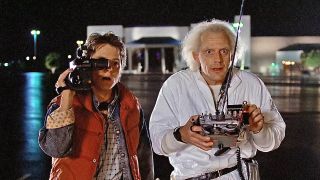
Is there ever a bad time to watch a time travel movie? Some of the best sci-fi movies in history have tackled this frequently explored topic, and new wrinkles in the fabric of the concept have made the subject more exciting over time. So why don’t we take a look at the different rules these flights of fancy have introduced? Should you be stuck in a time loop, we apologize if this list is starting to get old.

Back To The Future
Everyone loves to talk about how Back to the Future’s time travel works , but there’s one aspect we take for granted throughout the whole trilogy. Doc Brown ( Christopher Lloyd ) may have given Marty McFly ( Michael J. Fox ) the keys to travel through the past, present, and future; but you seriously need to consider the exact spot you’re traveling to. Otherwise, you might find yourself altering history in some intriguing ways. R.I.P. Twin Pines Mall.
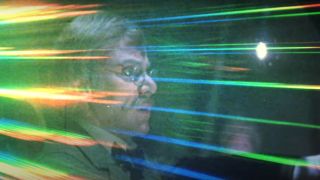
Time After Time
A novel adventure starring the father of time travel H.G. Wells (Malcolm McDowell), Time After Time actually introduced an interesting mechanic to temporal transport. Let’s just say that if you don’t use the Time Machine properly, you could find yourself stuck in your final destination. Or worse, falling through the time-space continuum, without a way back home.

The Terminator
The Terminator's time travel will forever be a head-scratcher, as the existence of John Connor is the ultimate ontological paradox. How else can you explain Kyle Reese (Michael Biehn) being sent back to the 1980s to save the world…and make sure the person who sent him is born in the first place?
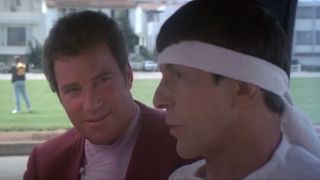
Star Trek IV: The Voyage Home
The oldest method of time travel in the Star Trek movies, 1986’s The Voyage Home saw Captain Kirk ( William Shatner ) and his crew trying to save the whales through a time heist. This wouldn’t have been possible if it wasn’t for the Enterprise crew using a Klingon Bird of Prey, a slingshot orbit around the sun, and a lot of engineering power to do it.
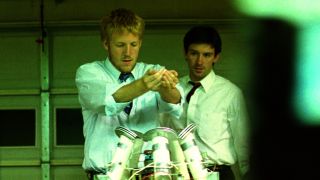
2004’s Primer is still hotly discussed among time travel aficionados, and it’s not hard to see why. The shenanigans in this test case involve multiple versions of a singular traveler (Shane Carruth) existing in a single timeline, which creates one of the most chaotic timelines ever depicted.

The Adam Project
Story-wise, The Adam Project is pretty cozy when it comes to how it handles time travel. But when it comes to traveling in style, the older Adam Reed ( Ryan Reynolds ) has a Time Jet that’s specifically coded to his DNA! Not many temporal travelers HAVE that, and it prevents so many mistakes other adventures of this sort use for story purposes.
CINEMABLEND NEWSLETTER
Your Daily Blend of Entertainment News

Avengers: Endgame
How Avengers: Endgame’s time travel works is rather unorthodox, to be honest. Instead of overwriting the past into a more pleasing result, the MCU’s finest are only allowed to use it in the name of stealing/returning the Infinity Stones. Timelines can still create tangent histories, and 2014 Gamora takes over for her slain variant in the films, but you can’t stop “The Snap.”

Lost In Space
If all time travelers had the device Older Will Robinson (Jared Harris) built in 1998’s Lost in Space , they’d have it made. While only one person can travel at a time, exact coordinates in time and space are required; so you can go to a very specific spatial location on the timeline.

The Butterfly Effect
The Butterfly Effect's time travel works on rules similar to that of Quantum Leap . Evan ( Ashton Kutcher ) can indeed change history, but it’s only within his own life’s timeline. Unfortunately, thanks to the multiple trips leading to continued alterations to the fabric of events, it all adds up in terms of severe physical wear and tear.

Hot Tub Time Machine
Hot Tub Time Machine is a very special case when it comes to time travel. To be fair, the comedy ensemble franchise gets points for having its protagonists travel only within their own bodies. As for how one can actually travel with said titular device, apparently you need an energy drink, the right hot tub with the right temperature, and some convenient writing.

Real-time bodily damage. That’s probably one of the most unique additions to Looper’s usage of time travel , as we see people incur damage in the past, only for it to show up on their future selves. Poor Seth ( Paul Dano ) demonstrated that lesson the hard way in Rian Johnson ’s sci-fi masterpiece.
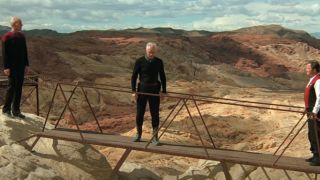
Star Trek: Generations
What if you could wish really hard to create an alternate timeline? Or what if you could send yourself back to your best memory, and never leave? That’s what The Nexus from Star Trek: Generations could do, and both Captains Kirk (William Shatner) and Picard ( Patrick Stewart ) got a taste of that sweet life, before ultimately using their new power to stop the villainous Dr. Soren (Malcolm McDowell).

Bill And Ted’s Excellent Adventure
If you ever want to bring a figure from history home for dinner in the present, do it in the universe of Bill and Ted’s Excellent Adventure . There are little to no consequences, especially when it comes to our heroes (Alex Winter and Keanu Reeves) whisking away two medieval princesses to become betrothed in the 1980s. Seriously, how did that not start a war?

The Time Traveler's Wife
“Chrono Impairment” is a seriously rare affliction, but it’s enough of a headache that it prevents Rachel McAdams and Eric Bana’s clock-crossed lovers from ever enjoying a normal life. Such is the nature of The Time Traveler's Wife , which invented that affliction to send Bana’s character Henry on unpredictable trips at unforeseeable intervals throughout his life.

Indiana Jones And Dial Of Destiny
For Indiana Jones and the Dial of Destiny's time travel to actually happen, the world of Harrison Ford’s iconic archeologist needed specific hardware. Aided by some very precise calculations to try and take the Nazis to where they were trying to go, it wasn't as simple as jumping into a car and gunning it to 88 miles per hour.
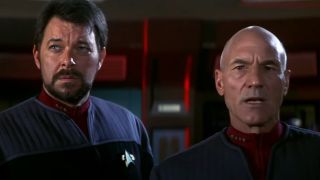
Star Trek: First Contact
For a franchise that uses temporal transit as much as the Star Trek series does, there sure are a lot of different ways to go back in time. And if you’re not satisfied with The Voyage Home’s method of a slingshot orbit around the Sun, then you can always do what Star Trek: First Contact did. While I wouldn’t personally recommend waiting for a Borg invasion to cause a temporal wake you can just hitch a ride on; you do you.

Ok, so technically Tenet’s shenanigans involving time is “time inversion,” rather than time travel. Which only makes the journey, and the resulting reality The Protagonist (John David Washington) lives in all the more complicated. It also makes for some classic Christopher Nolan mind melts.

Would this really be a sci-fi party if author Michael Crichton didn’t show up? Timeline’s time travel is a lot of fun, if you consider using a “human fax machine” to send yourself to medieval times “fun.” In which case, try not to abuse it too much, as every trip has the chance to leave you with transcription errors in your reassembled DNA. Again, we’re working with a fax machine here.

Somewhere In Time
It’s the moment you’ve been waiting for Christopher Reeve fans! Somewhere in Time just had to be on this list, as it's pretty unique in how it sends a person back through the ages. In the case of Reeve’s playwright Richard, all he needs is a really powerful hypnotic focus to zoom back to 1912.

Star Trek (2009)
It’s kind of fitting that the 2009 Star Trek reboot would use time travel, given that the series has continually danced with that concept on TV and in movies. For this J.J. Abrams-directed venture, the destructive and inexact force of a black hole is what’s used to accidentally alter time so vastly that William Shatner turns into Chris Pine.
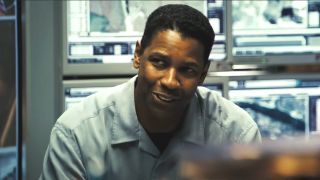
Déjà Vu
Tony Scott’s 2006 action-thriller Déjà Vu is a big movie with a relatively limited scope. With intelligence gathering, and ultimately one human transport, that can only go as far back as four and a half days, Denzel Washington’s work was kind of cut out for him on this caper.

The Tomorrow War
The Chris Pratt-starring time travel ensemble adventure The Tomorrow War has some pretty huge stipulations when it comes to recruiting an army for the future. The largest among them was, of course, you had to be dead according to the records of the future hellscape that pitted humanity against some very nasty creatures.

X-Men: Days Of Future Past
Going from here to there in the then and now in X-Men: Days of Future Past requires a serious amount of power. With Wolverine (Hugh Jackman) going back to his past body, the key to how it all happens lies in the phasing abilities of Kitty Pryde (Elliot Page). So this story uses a very physical, and incredibly vulnerable, method to execute its vision.

Out of all the time travel universes we’ve seen on screen, perhaps the one I feel the most sorry for is the one shown in 12 Monkeys . The basic rule of this Bruce Willis epic’s temporal transit is “hope for the best,” thanks to the method of being shot through time and intending to land in the right place going wrong more often than you think.

Midnight In Paris
Reminiscent of many other vehicular-based time travel films like Back to the Future , any character that travels through time in Midnight In Paris just needs to catch the right ride, at just about Midnight. The experience is bespoke to whoever is traveling, as the period of time that suits them best also dictates the method of transportation provided.

The Final Countdown
Dropping an aircraft carrier from the 1980s into the moments before Pearl Harbor, The Final Countdown delivers a moral dilemma plenty of time travelers have tangled with. But the real difference with this underrated sci-fi movie is the fact that the time-traveling storm that is responsible for the trip is inescapable. You’re going home, whether you want to or not.

Sharing a similarity with the romantic classic Somewhere In Time , Richard Curtis’ About Time allows any potential traveler to jump into the past with merely intense concentration. However, certain caveats are in play, like the recommendation of not traveling past certain life milestones, or the fact that only the men of the Lake family can actually use this gift.

Donnie Darko
Donnie (Jake Gyllenhaal) can’t exactly travel through time in Donnie Darko , but he does have a special temporal ability that’s kind of funny and kind of sad. With the ability to open a wormhole between the present and the past, Mr. Darko can send objects through time; the skill that gives Richard Kelly’s movie its bittersweet ending.

Kate & Leopold
Kate & Leopold’s usage of a localized time portal is a method as old as time. However, the big difference with this Meg Ryan/Hugh Jackman rom-com is that the journey Leopold (Jackman) takes to the “future” of 2001 robs us all of elevators. Also, there’s a ticking clock on this specific portal’s usage, which only complicates things further.

Groundhog Day
Perhaps the movie that nailed the time loop into the consciousness of the world, Groundhog Day brought us a charming Bill Murray rom-com mixed with a time travel story. Its misanthropic lead needed to change, even as the world around him stayed the same. The rest was sci-fi history in the making.

Happy Death Day
What happens if you make a Groundhog Day-style time loop into a deadly game? You get a movie like Happy Death Day , in which our initially unlikable lead Tree (Jessica Rothe) is being stalked through a single-day time loop. The big kicker in this variant is that, unlike your standard time loop, Tree has a finite number of cycles before she possibly dies for good.
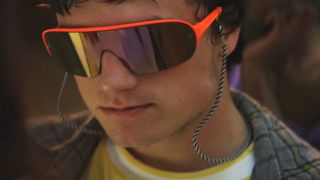
Where does one start with director Joseph Kahn’s Detention? Well, how about the fact that the teenagers in play (including a pre- Hunger Games Josh Hutcherson) use a stuffed bear as a time travel capsule? Or the fact that a mother/daughter pair can body swap on a permanent basis, and with no consequences?
And with that, our supreme sampling of time travel trips has come to a close. Which more than likely has left you with a want to watch some of these movies again, or for the first time. That's totally natural, because this is a subgenre that always leaves us with one question: is there ever a bad time to watch a time travel movie?
Mike Reyes is the Senior Movie Contributor at CinemaBlend, though that title’s more of a guideline really. Passionate about entertainment since grade school, the movies have always held a special place in his life, which explains his current occupation. Mike graduated from Drew University with a Bachelor’s Degree in Political Science, but swore off of running for public office a long time ago. Mike's expertise ranges from James Bond to everything Alita, making for a brilliantly eclectic resume. He fights for the user.
The Roses: What We Know About The War Of The Roses Reimagining
Weapons: Release Date, Cast, And Other Things We Know About Zach Cregger's Horror Movie
It Ends With Us: 10 Big Differences Between The Colleen Hoover Book And The Movie
Most Popular
- 2 The Roses: What We Know About The War Of The Roses Reimagining
- 3 Weapons: Release Date, Cast, And Other Things We Know About Zach Cregger's Horror Movie
- 4 Mike Tyson's Last Opponent Has One Crucial Piece Of Advice For Jake Paul Ahead Of Fight: 'Tell The Ref'
- 5 Colleen Hoover Reveals The Scene From It Ends With Us That Left Her ‘A Little Jarred’

IMAGES
COMMENTS
In Summary: Yes, time travel is indeed a real thing. But it's not quite what you've probably seen in the movies. Under certain conditions, it is possible to experience time passing at a different rate than 1 second per second. And there are important reasons why we need to understand this real-world form of time travel.
The first page of The Time Machine published by Heinemann. Time travel is the hypothetical activity of traveling into the past or future.Time travel is a widely recognized concept in philosophy and fiction, particularly science fiction. In fiction, time travel is typically achieved through the use of a hypothetical device known as a time machine.The idea of a time machine was popularized by H ...
Relativity means it is possible to travel into the future. We don't even need a time machine, exactly. We need to either travel at speeds close to the speed of light, or spend time in an intense ...
An observer traveling at high velocity will experience time at a slower rate than an observer who isn't speeding through space. While we don't accelerate humans to near-light-speed, we do send ...
One of the key ideas in relativity is that nothing can travel faster than the speed of light— about 186,000 miles per second (300,000 kilometers per second), or one light-year per year). But you ...
Time traveling to the near future is easy: you're doing it right now at a rate of one second per second, and physicists say that rate can change. According to Einstein's special theory of ...
Please tell us your name, age and the city where you live. And since curiosity has no age limit - adults, let us know what you're wondering, too. We won't be able to answer every question ...
The simplest answer is that time travel cannot be possible because if it was, we would already be doing it. One can argue that it is forbidden by the laws of physics, like the second law of ...
One of the first known examples of time travel appears in the Mahabharata, an ancient Sanskrit epic poem compiled around 400 B.C., Lisa Yaszek, a professor of science fiction studies at the ...
A history of time travel: the how, the why and the when 20 best sci-fi films on Netflix and Amazon Prime Amazing future tech from sci-fi films that totally exist now
Time travel, a longstanding fascination in science fiction, remains a complex and unresolved concept in science. The second law of thermodynamics suggests time can only move forward, while Einstein's theory of relativity shows time's relativity to speed. Theoretical ideas like wormholes offer potential methods, but practical challenges and ...
Time travel exerts an irresistible pull on our scientific and storytelling imagination. Since H.G. Wells imagined that time was a fourth dimension —and Einstein confirmed it—the idea of time ...
The dream of traveling through time is both ancient and universal. But where did humanity's fascination with time travel begin, and why is the idea so appealing? The concept of time tr
Time loops have long been the stuff of science fiction. Now, using the rules of quantum mechanics, we have a way to effectively transport a particle back in time - here's how. When Seth Lloyd ...
Mallett was aged 10 when his father died suddenly, of a heart attack, an event that the scientist says changed the track of his life forever. "For me, the sun rose and set on him, he was just ...
Time Travel. Arguably, we are always travelling though time, as we move from the past into the future. But time travel usually refers to the possibility of changing the rate at which we travel into the future, or completely reversing it so that we travel into the past. Although a plot device in fiction since the 19 th Century (see the section ...
A documentary on the history and pop culture of time travel. Featuring interviews with MIT Professor Erik Demaine, Sci-Fi writer Daniel Wilson, and T.V. show...
One of the Universe's most enduring mysteries is Time Travel. In this episode, we explore the possibilities. Discover why Time Travel into the future is unav...
If time travel to the past is possible, he argues, it really should be possible to change things - but doing so will create an alternate timeline. ... Our universe is full of matter, and each ...
For us, there are many advantages to traveling full-time. Beyond the general benefits of travel such as broadening your perspective, improving communication skills, and exposing yourself to new cultures, people, and ideas there are some additional upsides that come with full-time travel. Traveling full time affords us a sense of freedom we ...
Heather may have started the Great Resignation movement. In 2017, she quit her job to travel the world full time. Since then, she's been to six continents and 33 countries (and counting) enjoying adventures such as seeing the Big 5 in Africa, watching the sun rise and set over the Moai on Easter Island, ziplining in Costa Rica, drinking malbec in Mendoza, and getting stuck in New Zealand ...
Time Travel. Time travel is commonly defined with David Lewis' definition: An object time travels if and only if the difference between its departure and arrival times as measured in the surrounding world does not equal the duration of the journey undergone by the object. For example, Jane is a time traveler if she travels away from home in ...
Other articles where time travel is discussed: science fiction: Time travel: A complement to travel through space is travel through time. A prototype of the time travel story is Charles Dickens's A Christmas Carol (1843). The story features the Ghost of Christmas Yet to Come, who is magically able to immerse the hapless Scrooge…
Rated: 3/5 Apr 24, 2009 Full Review Dominic Wells Times (UK) Frequently Asked Questions About Time Travel is, unashamedly, a Mini Cooper of a film: small but nippy. Rated: 3/5 ...
2. WHEN THE UNIVERSE EVENTUALLY DIES THERE WILL BE NO MORE FUTURE AND NO PAST. Much like us, the way time passes changes will change as the Universe ages. The "arrow of time", which points from ...
Jim picks up a hitch-hiker, Ares, who says he's a scientist from the year 3059. He says he traveled millions of years into the future, but came back to the wrong year. Life in 3059 is trouble free, with machines taking care of everything. Future Earth is in trouble, with all life extinct, except for humans and plants.
If we can do it, so can you. It will take determination and discipline, but if you want it badly, you'll do whatever it takes. We have no idea what will happen after 2 years. We might come back home and start from zero, get a 9 to 5 job and start working like crazy to recover from spending all of our savings traveling.
Jimin and Jung Kook's new reality TV show Are You Sure?!is premiering on Disney+ on August 8. The streamer has not confirmed a release time, but HYBE shows on Disney+ typically premiere at 4 a.m ...
Republicans have leveled inaccurate or misleading attacks on Mr. Walz's response to protests in the summer of 2020, his positions on immigration and his role in the redesign of Minnesota's flag.
The oldest method of time travel in the Star Trek movies, 1986's The Voyage Home saw Captain Kirk (William Shatner) and his crew trying to save the whales through a time heist. This wouldn't ...